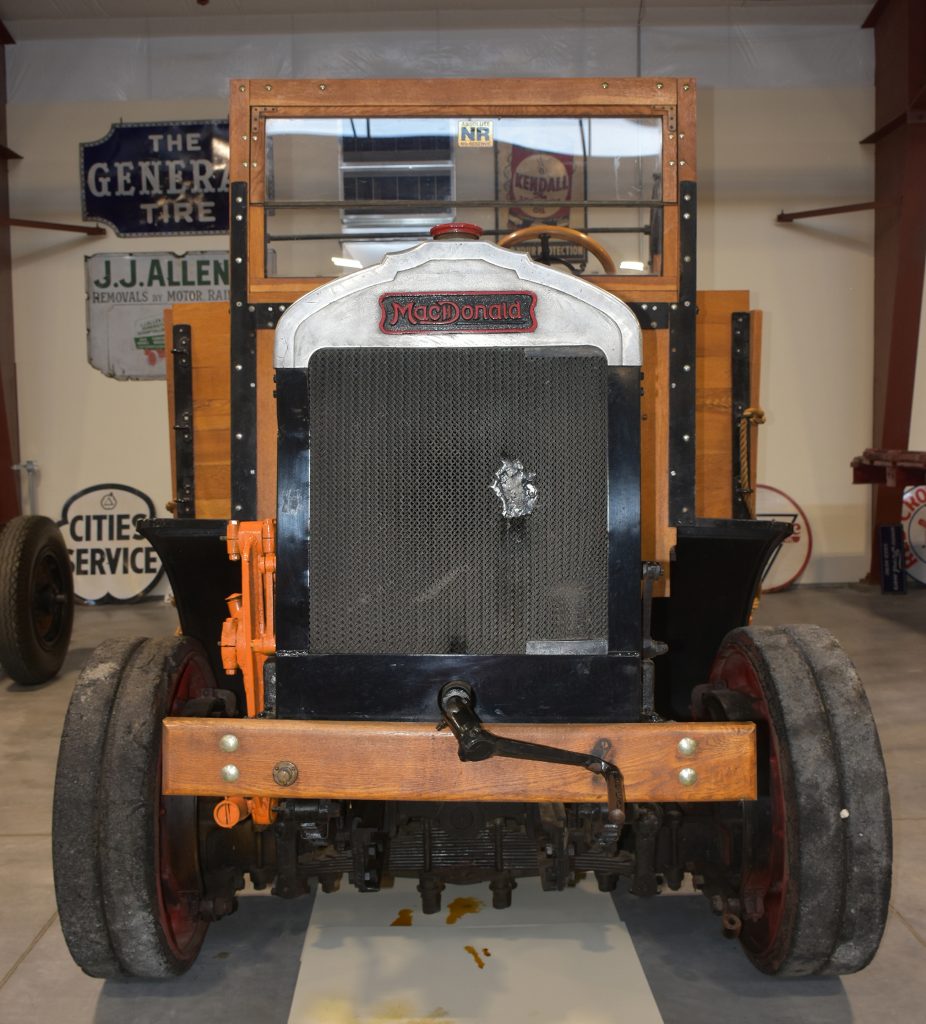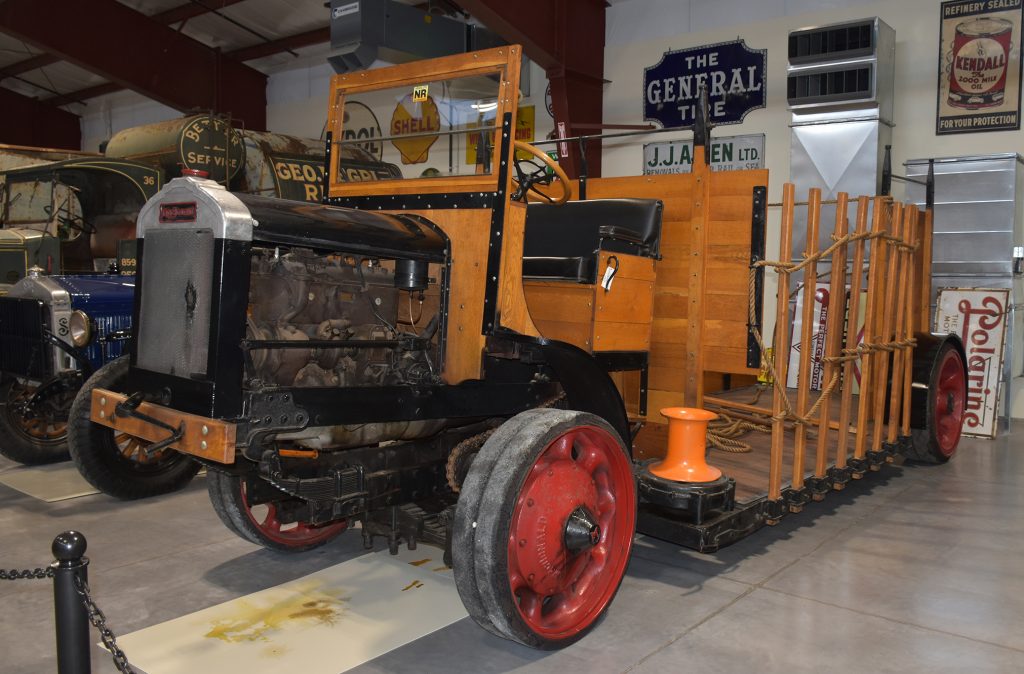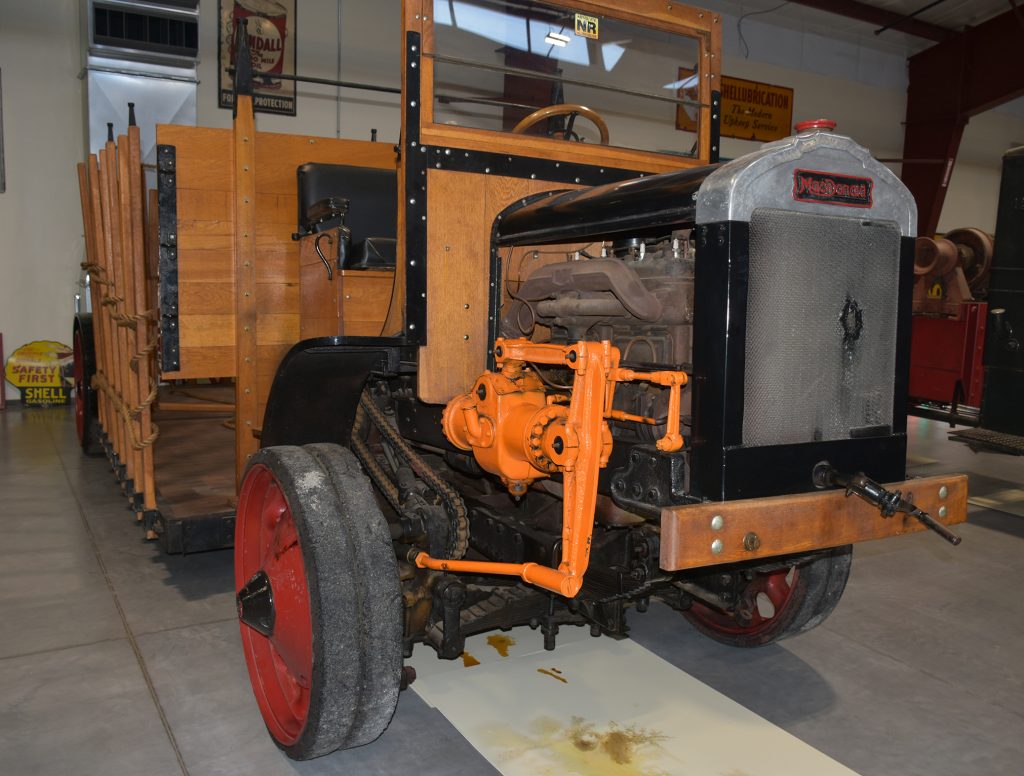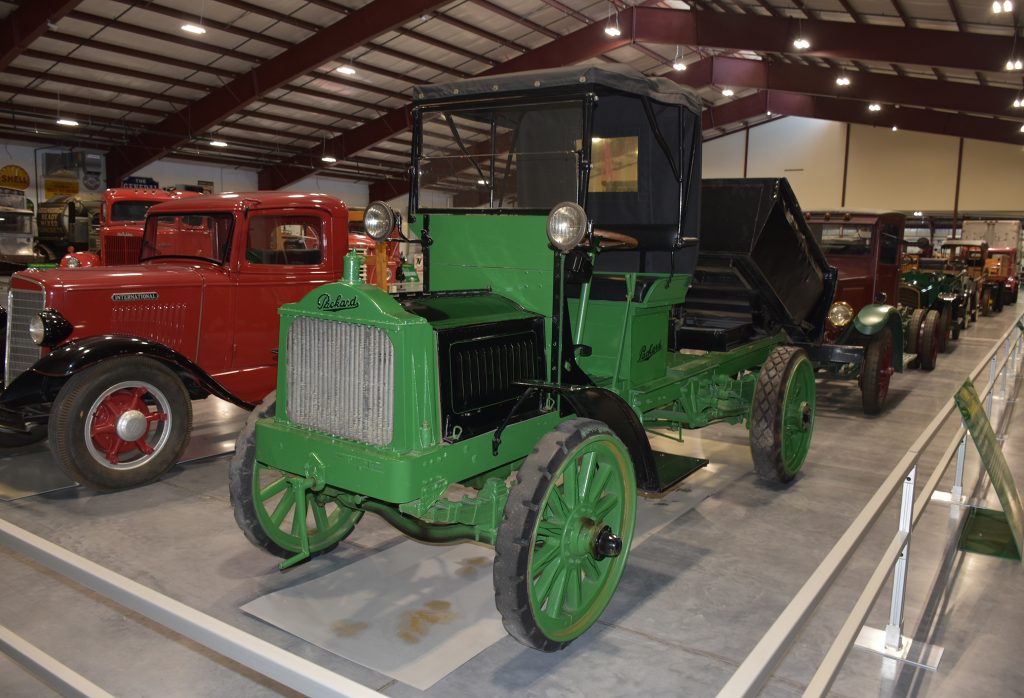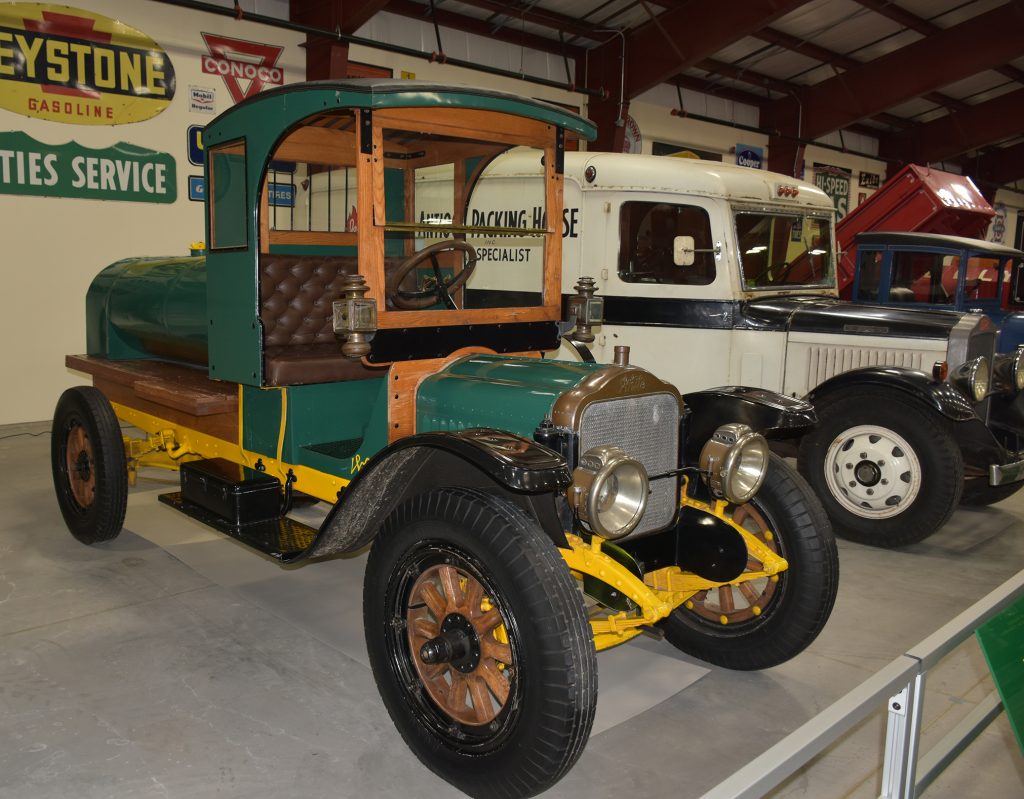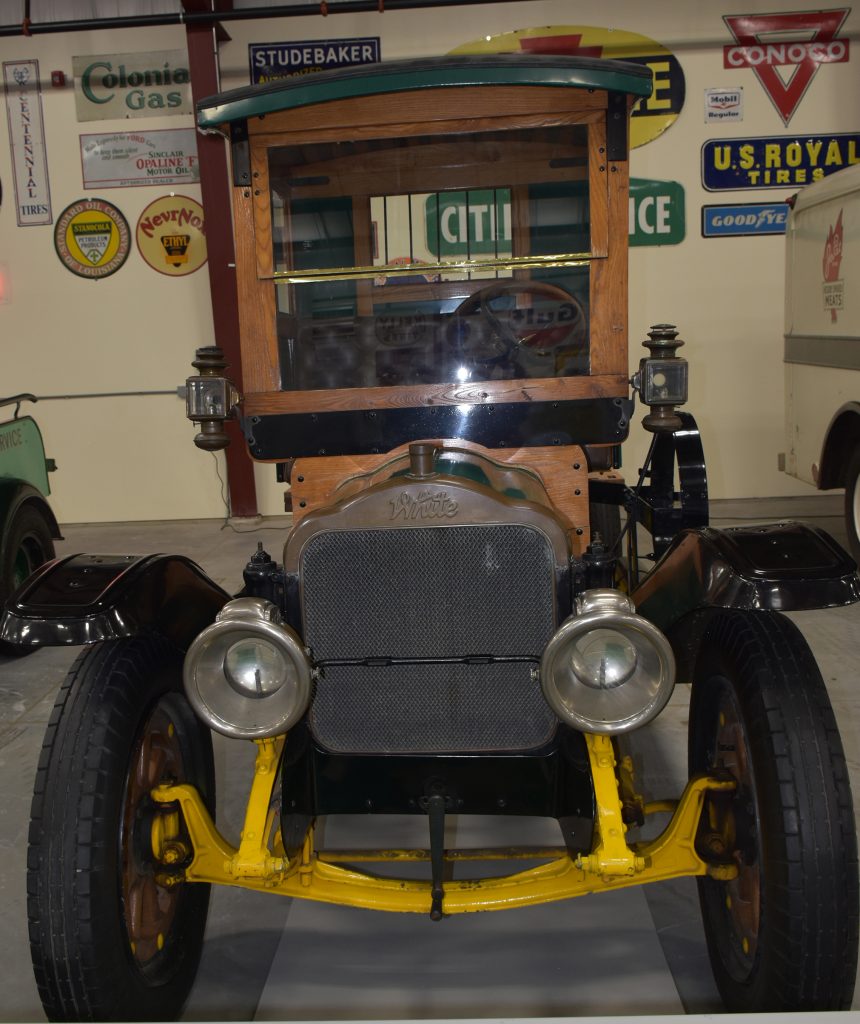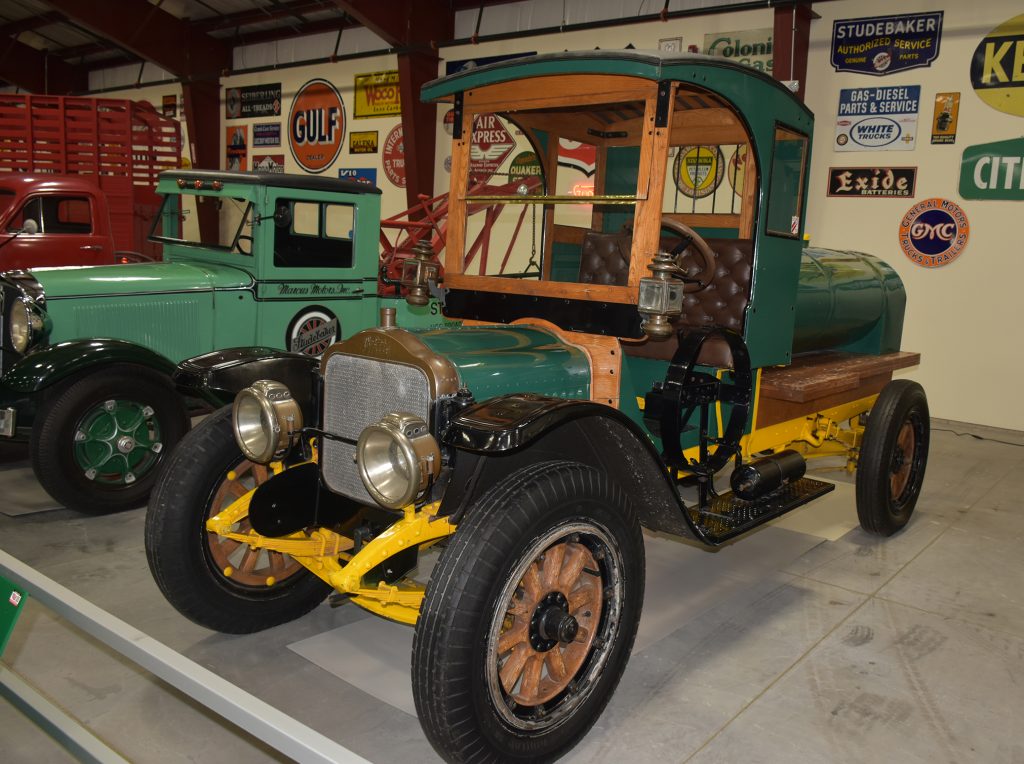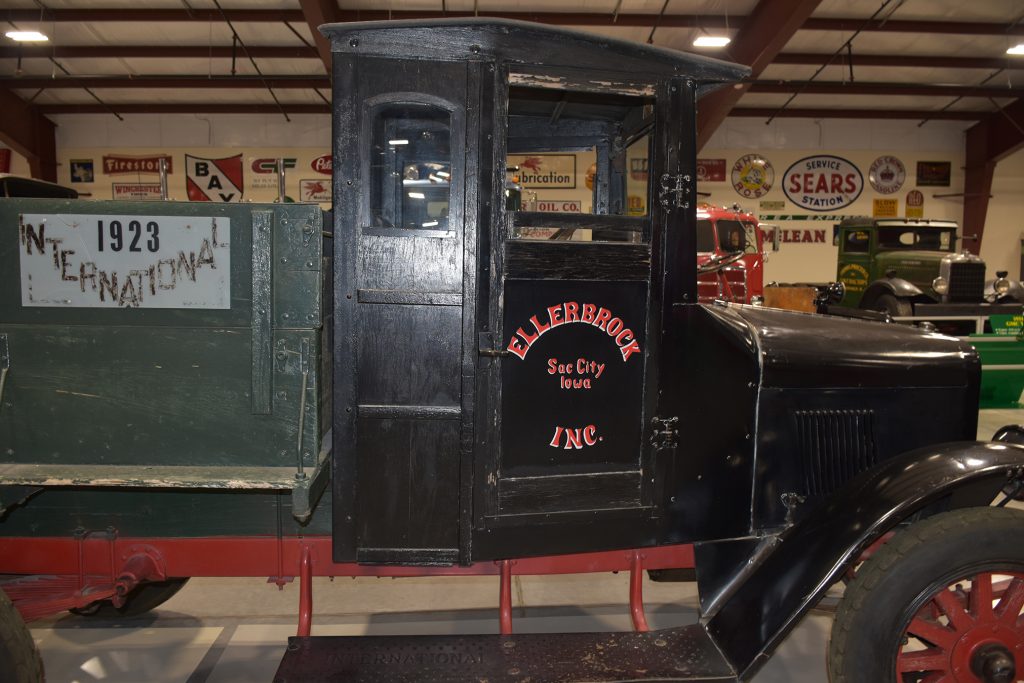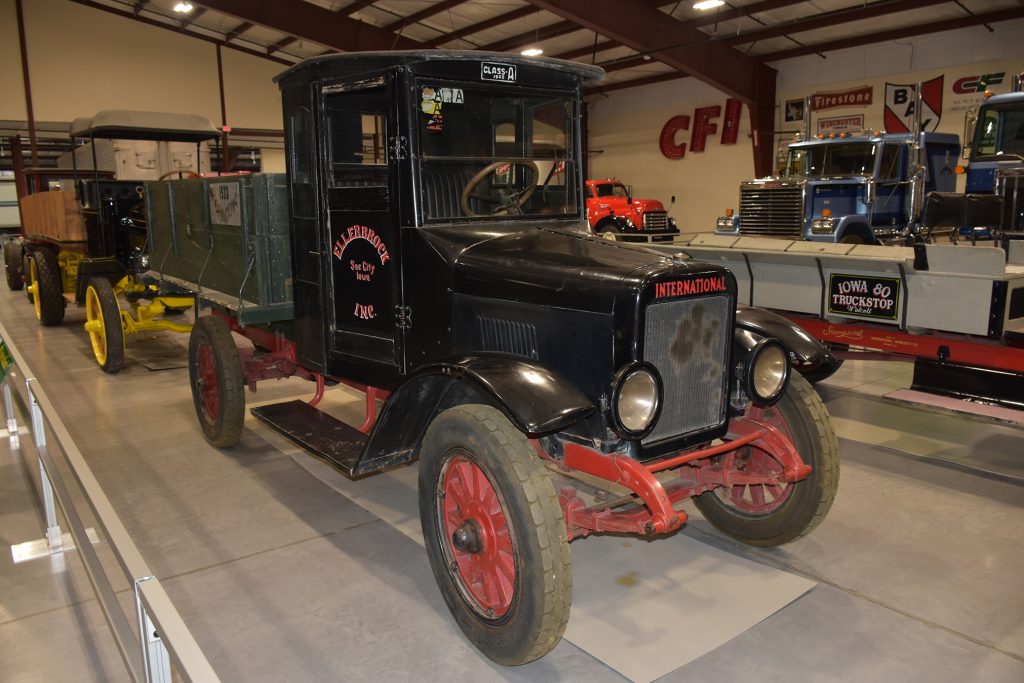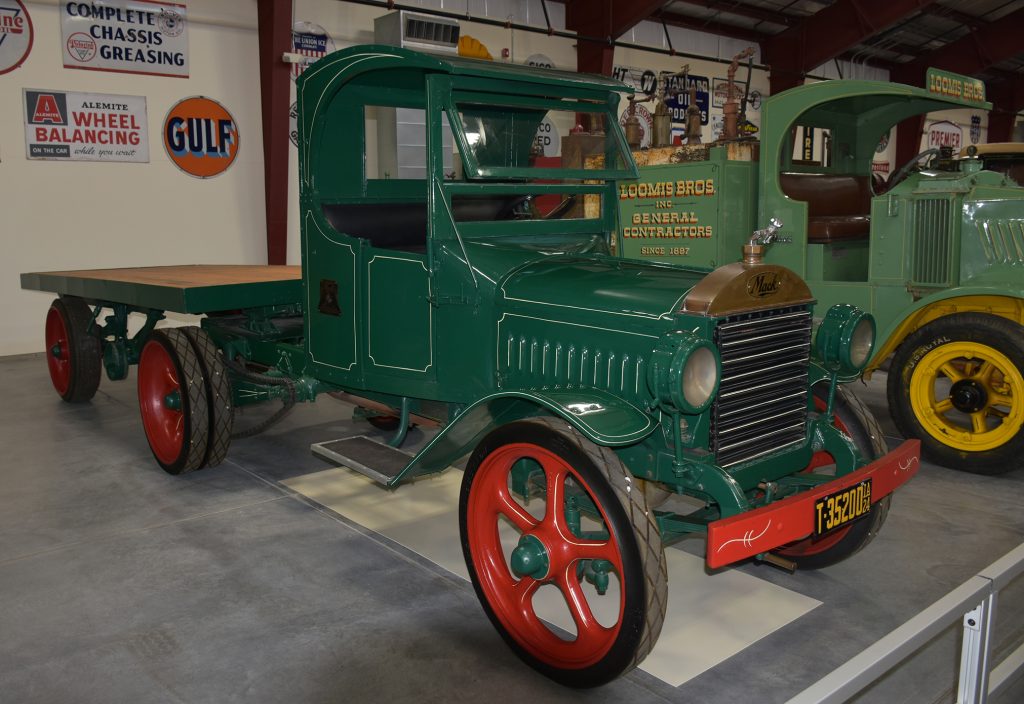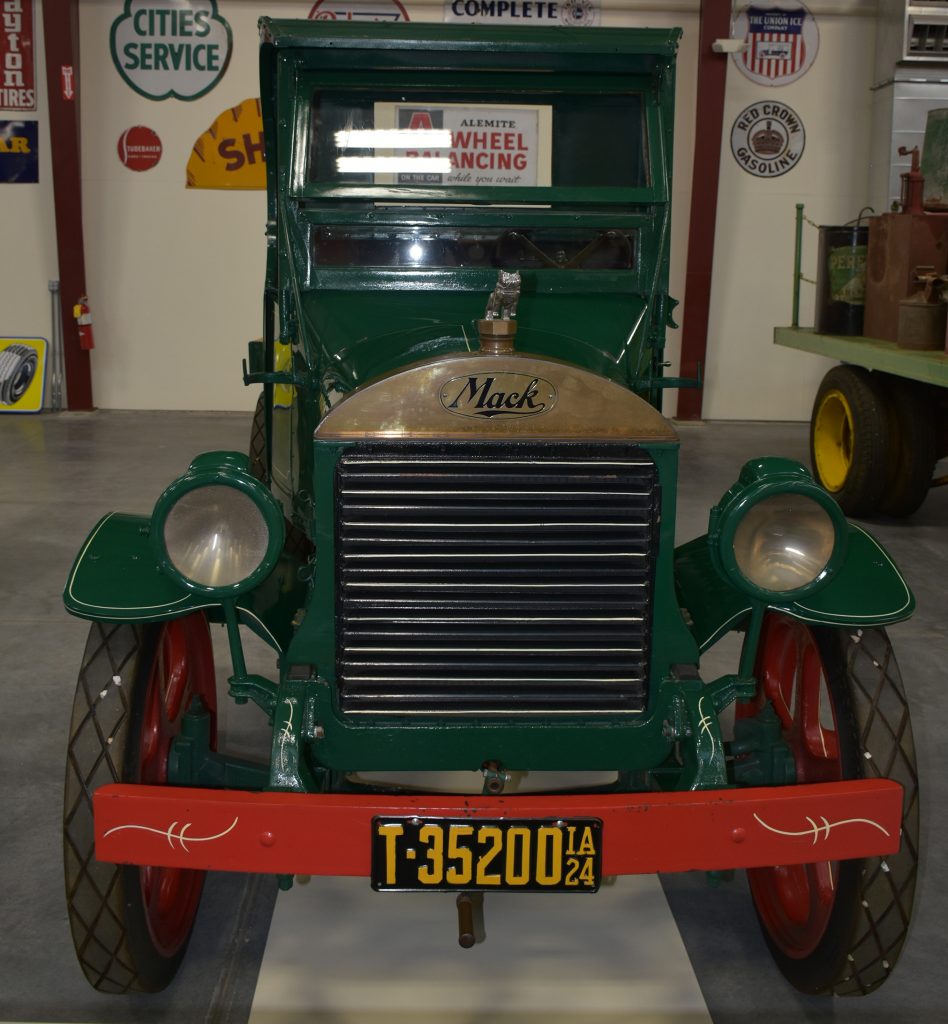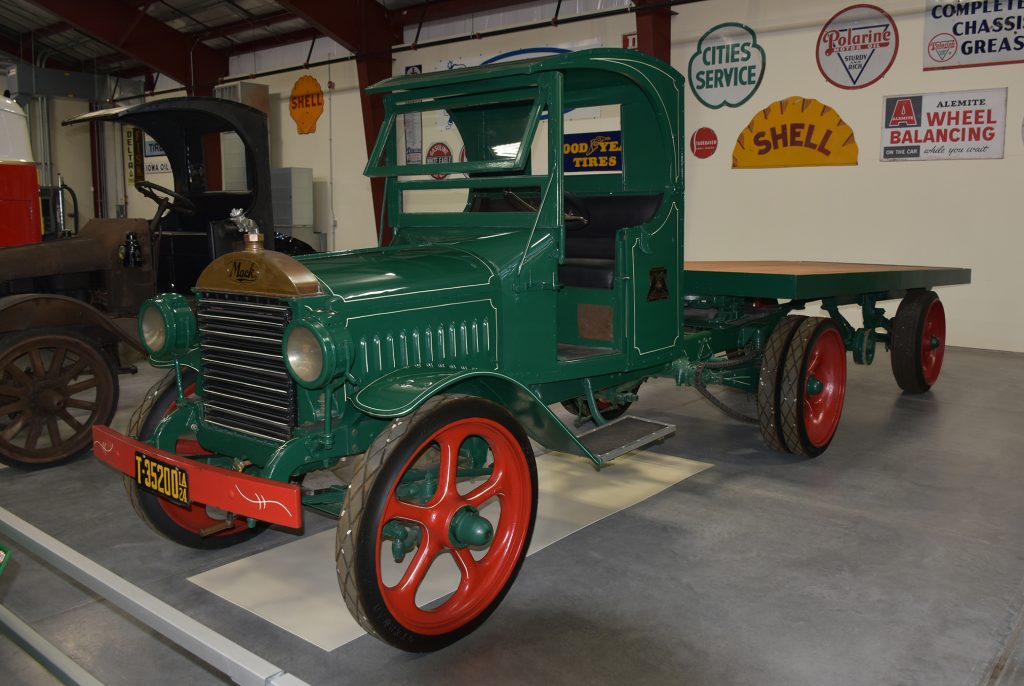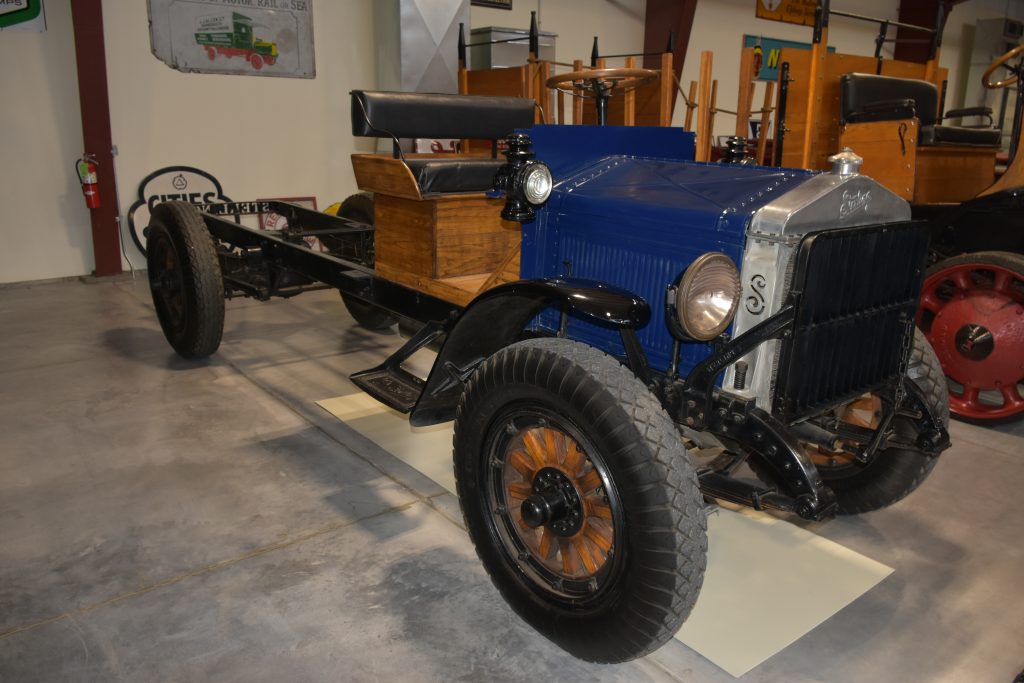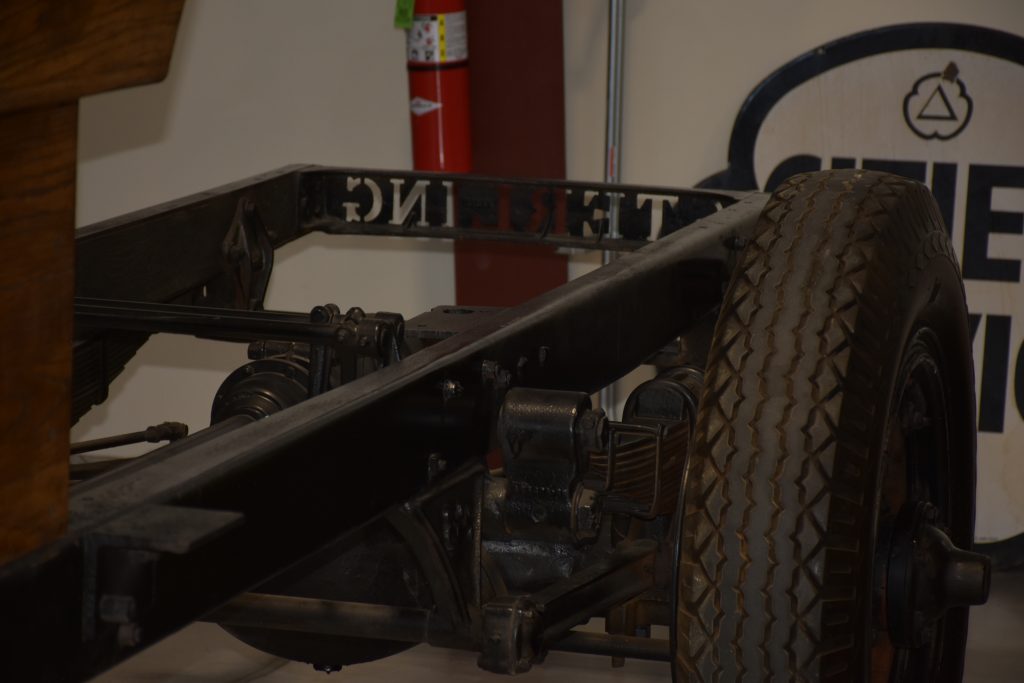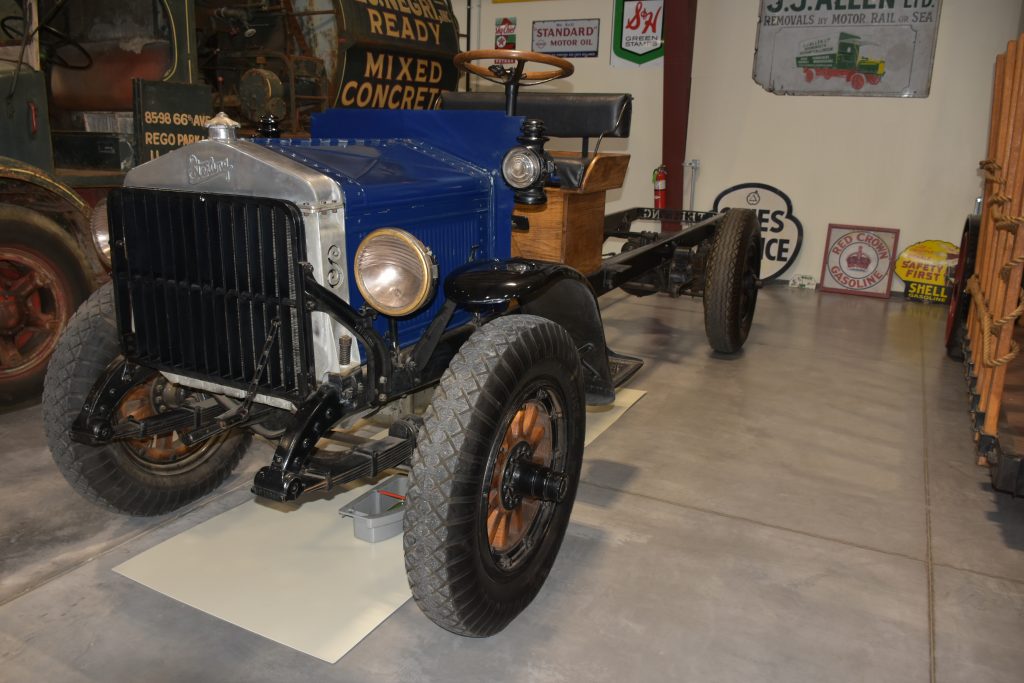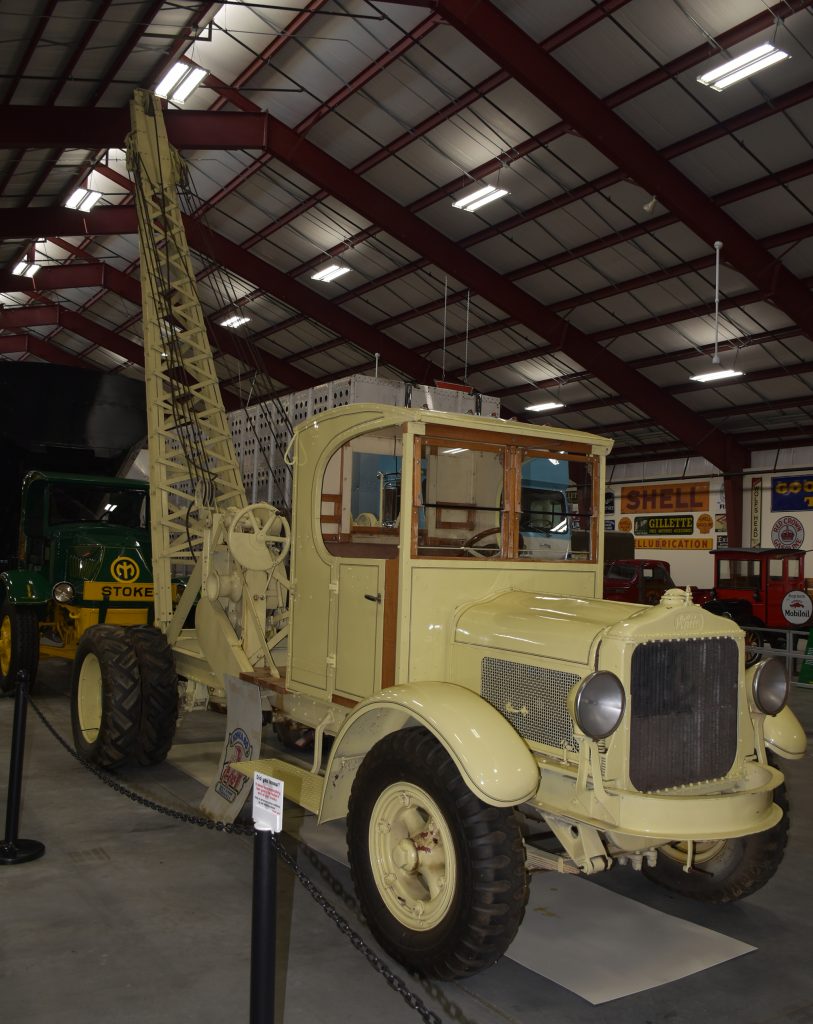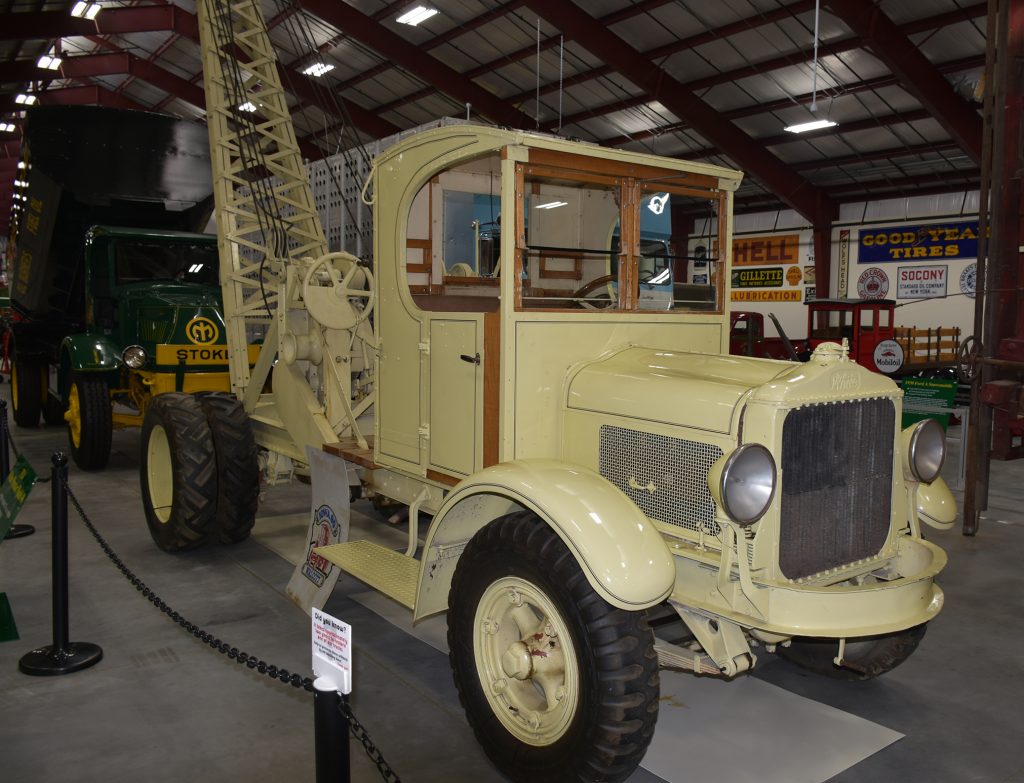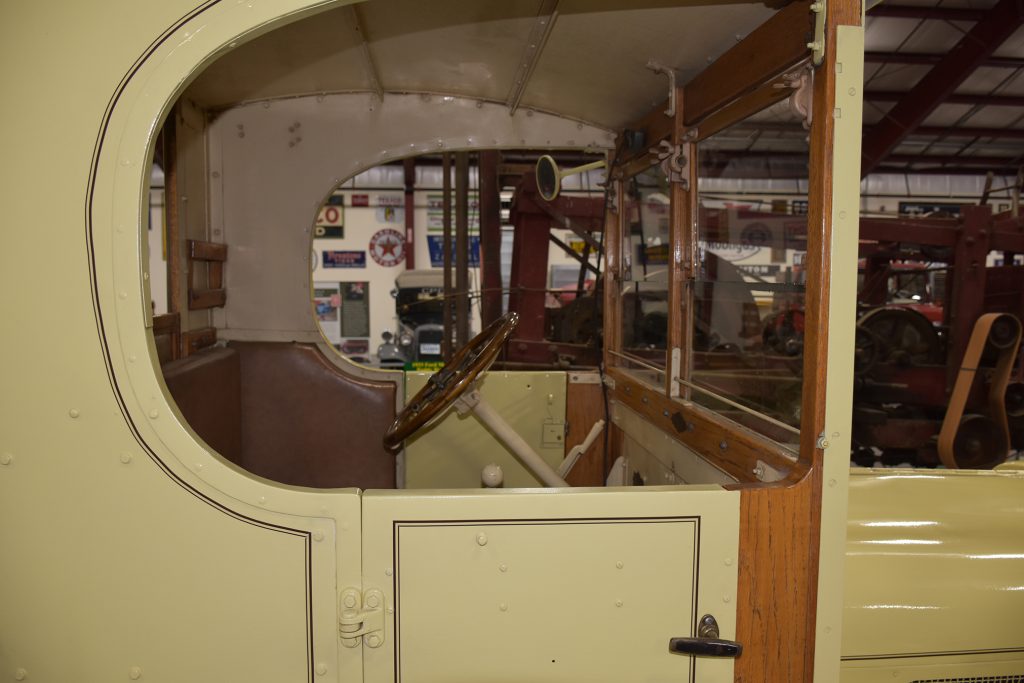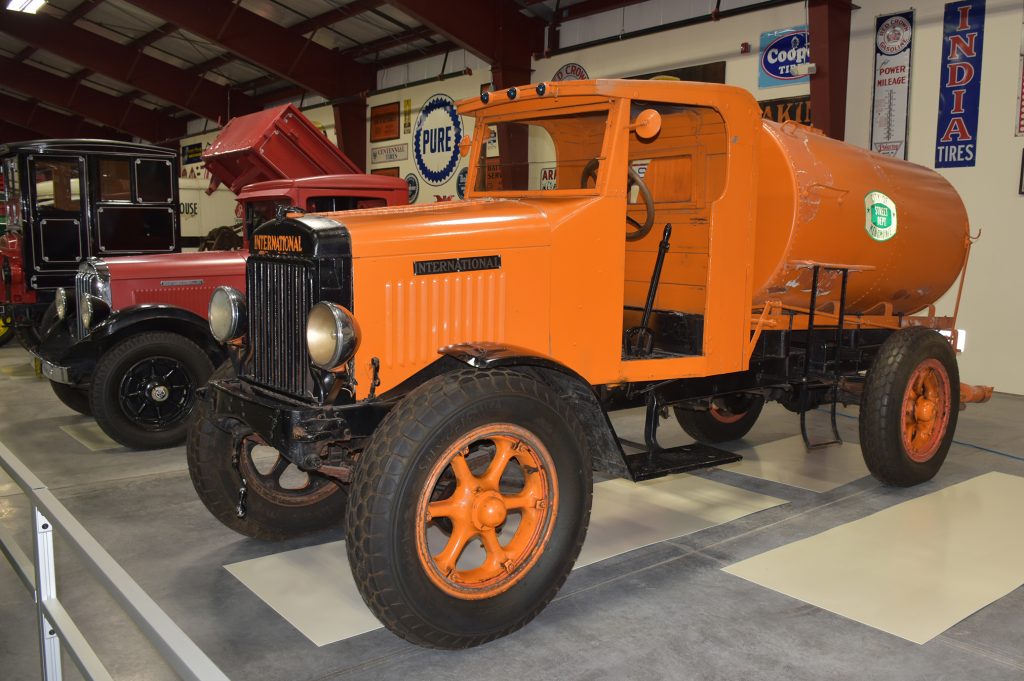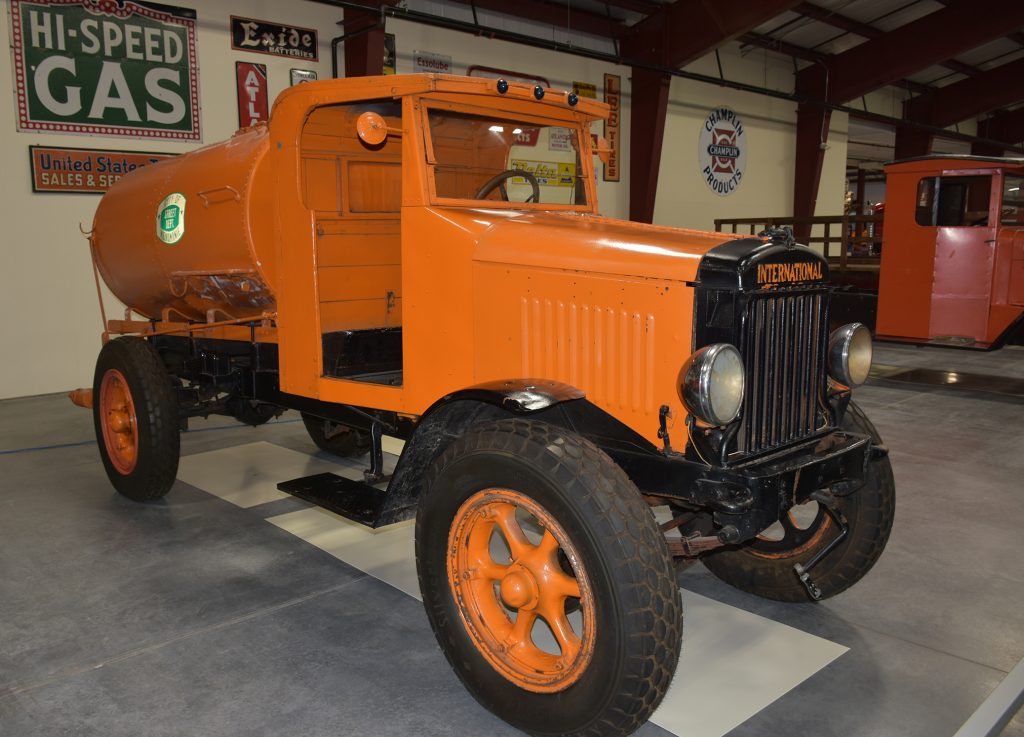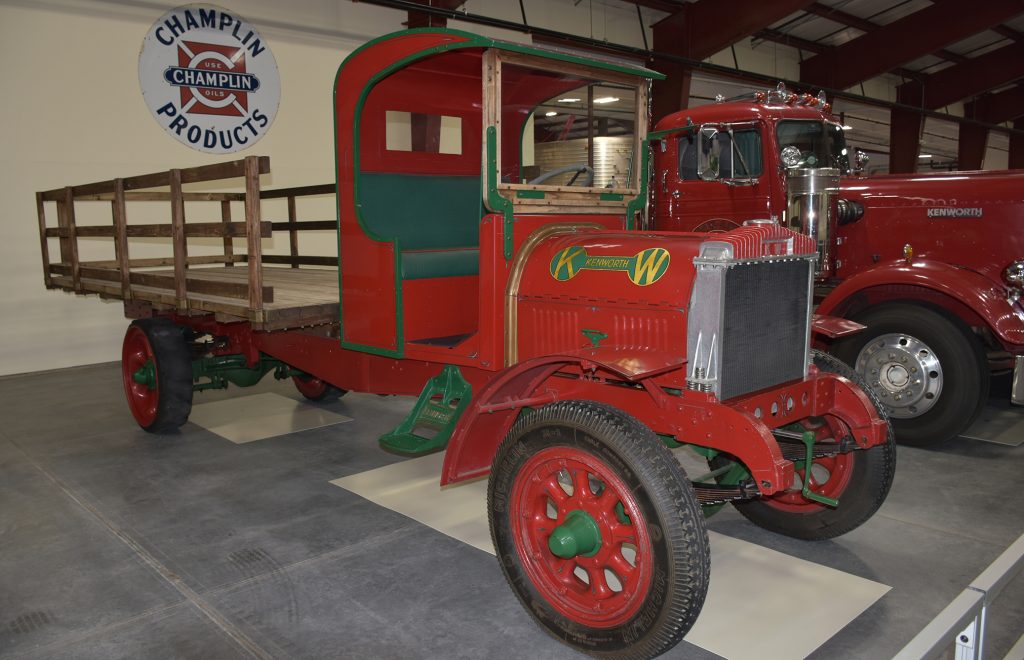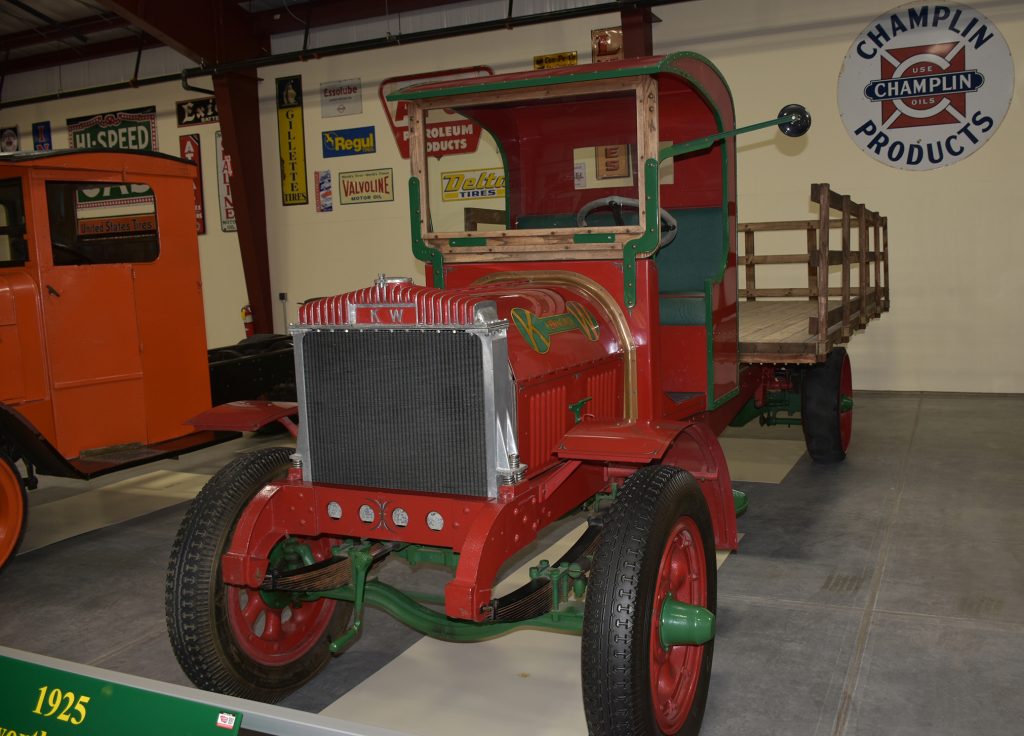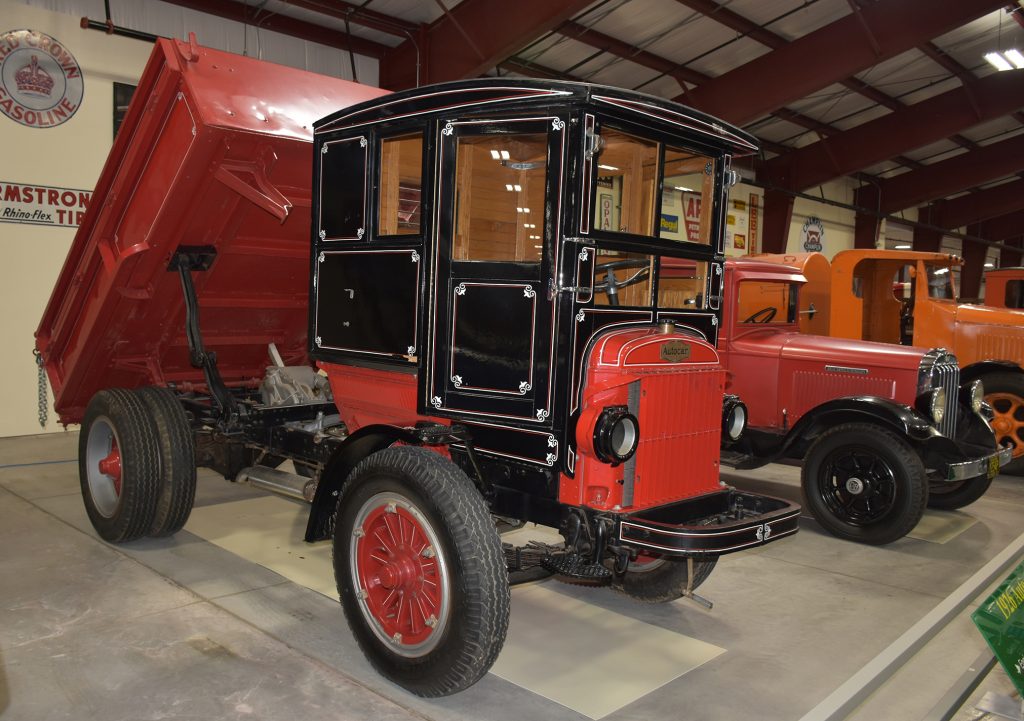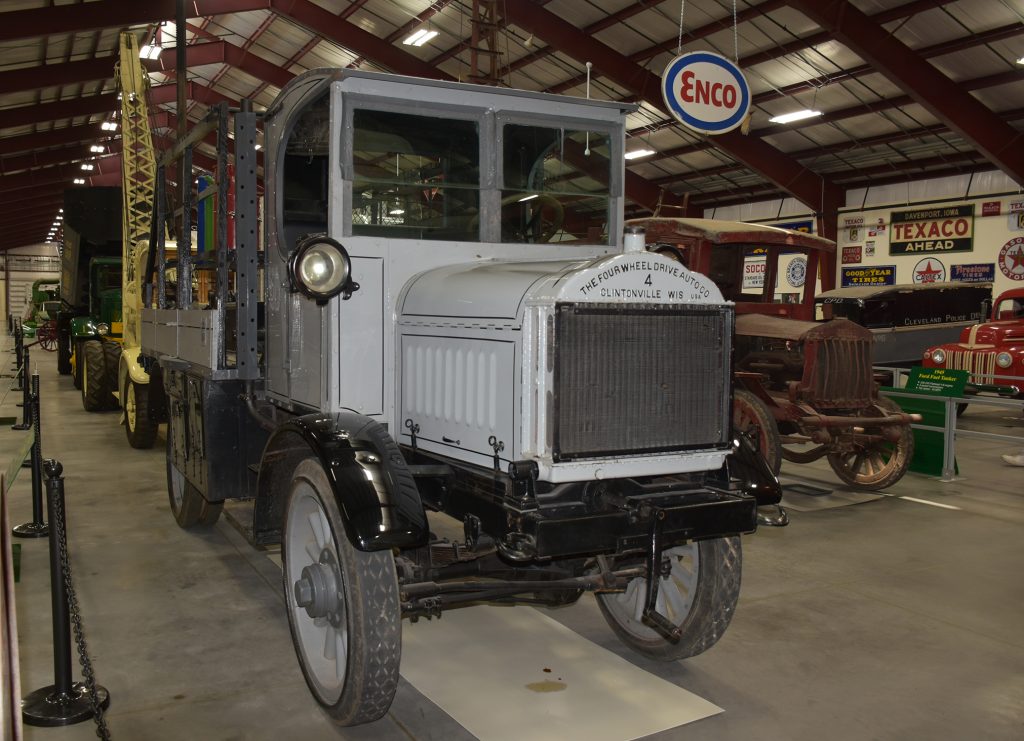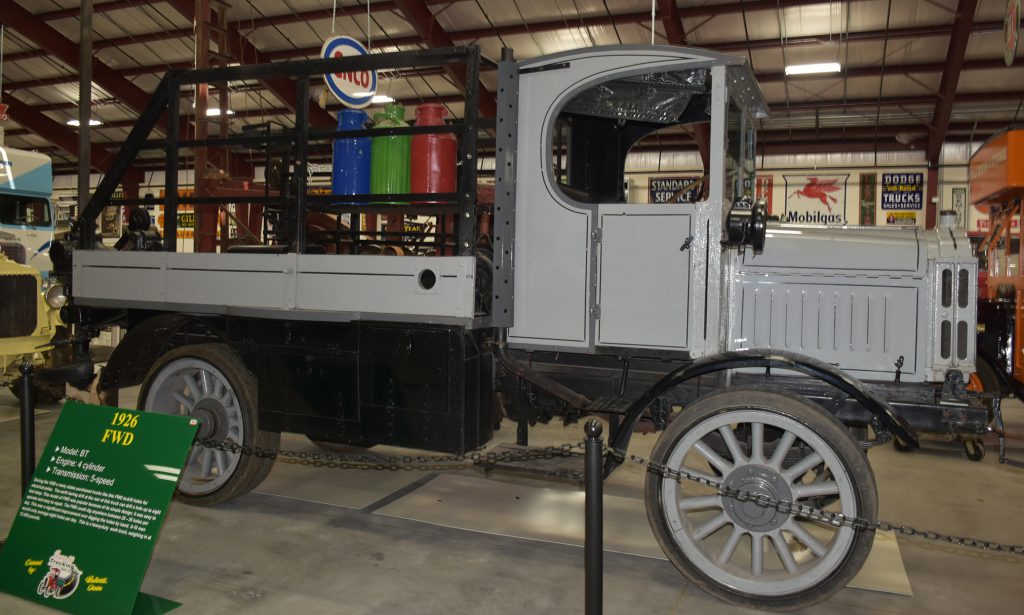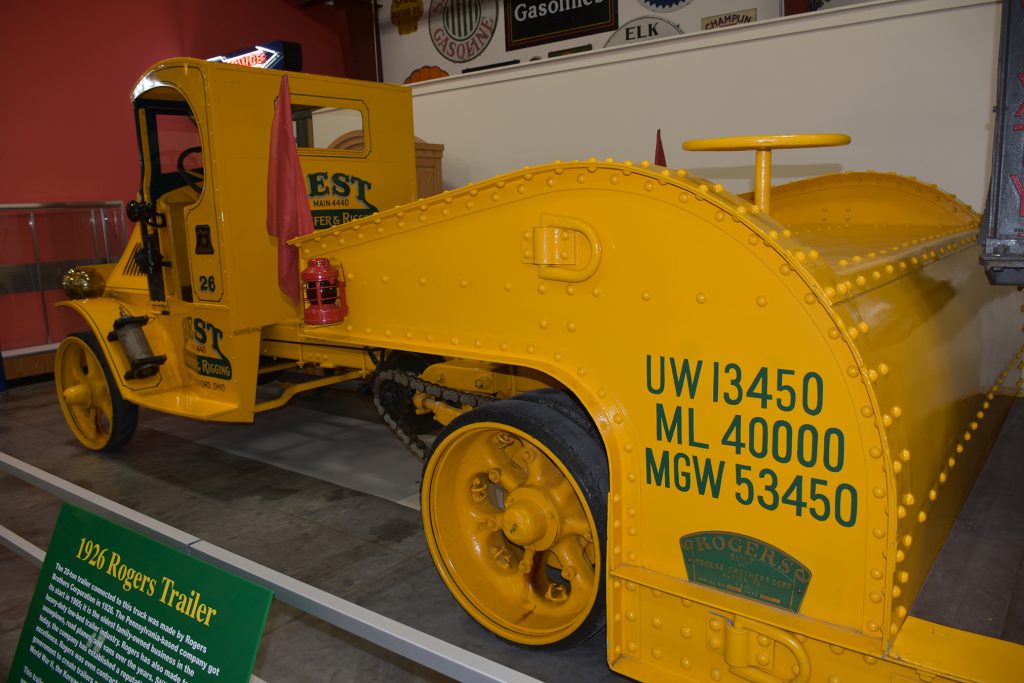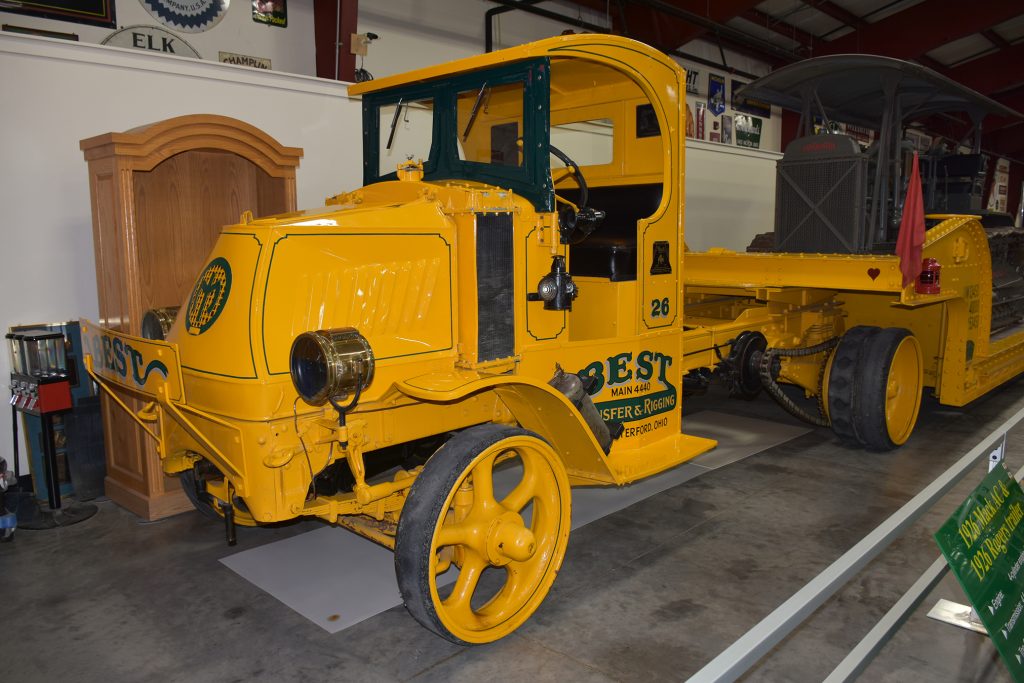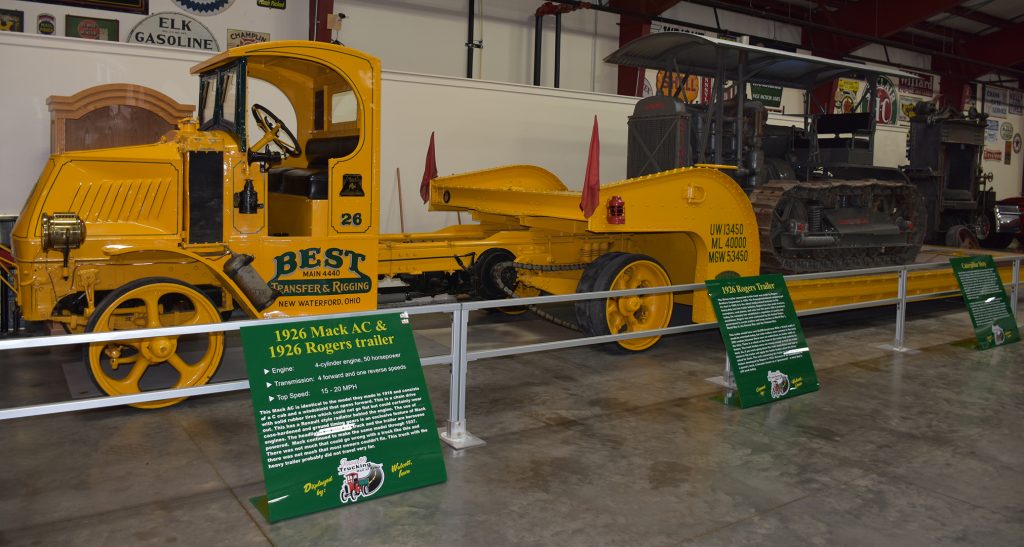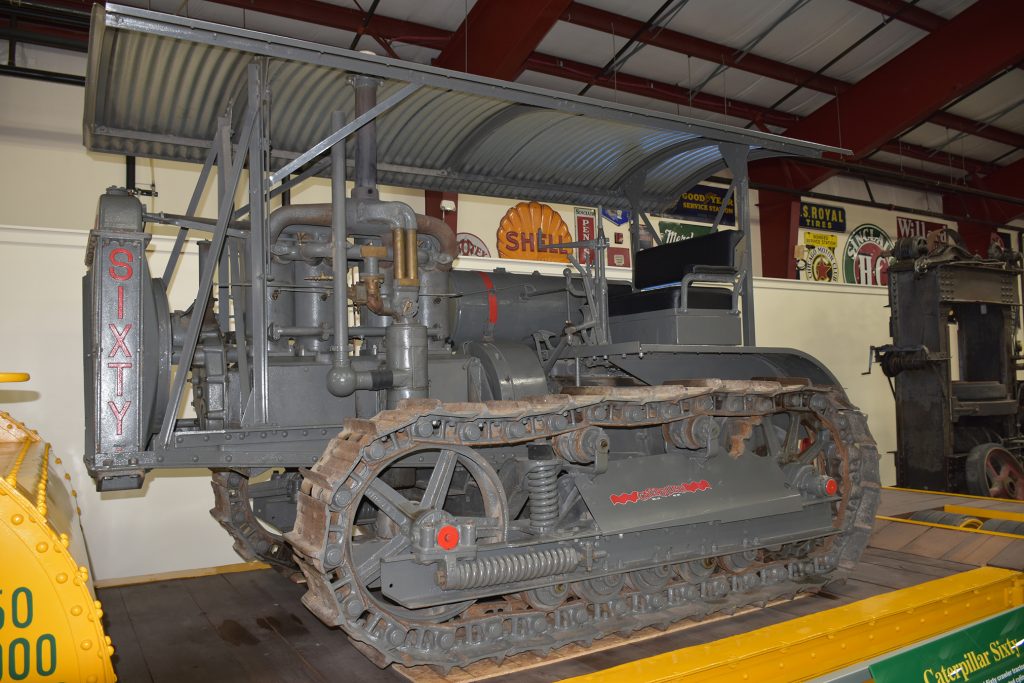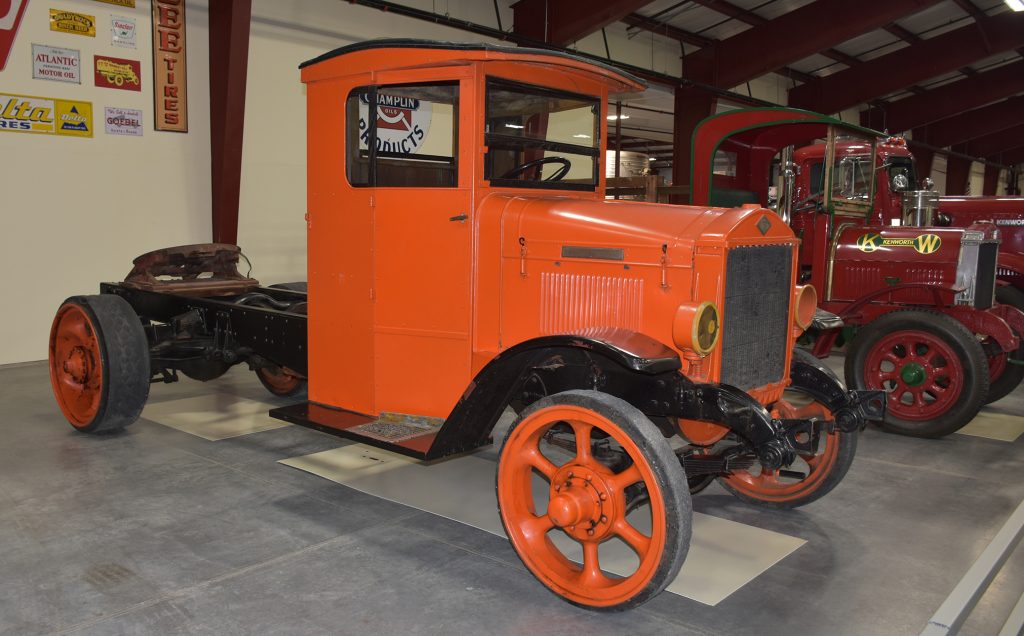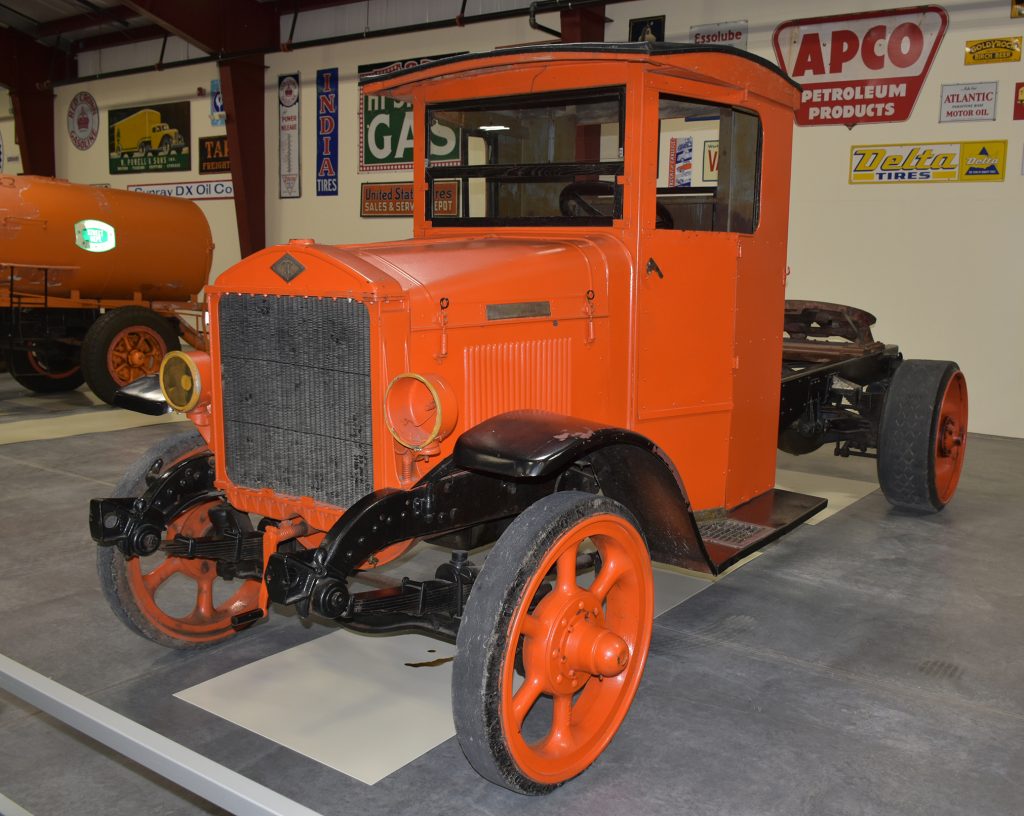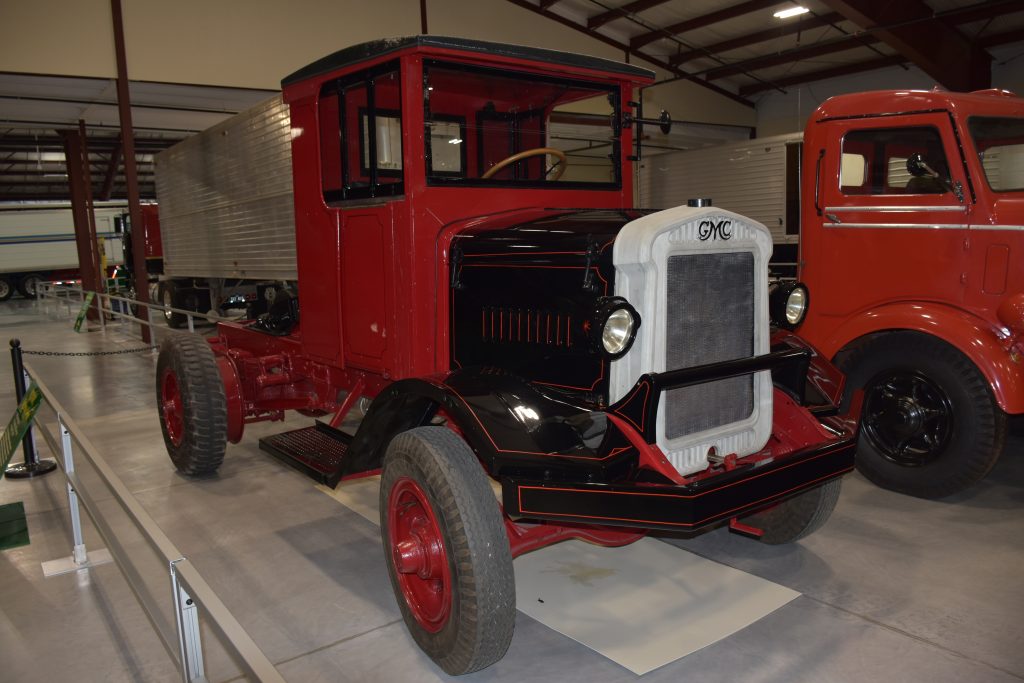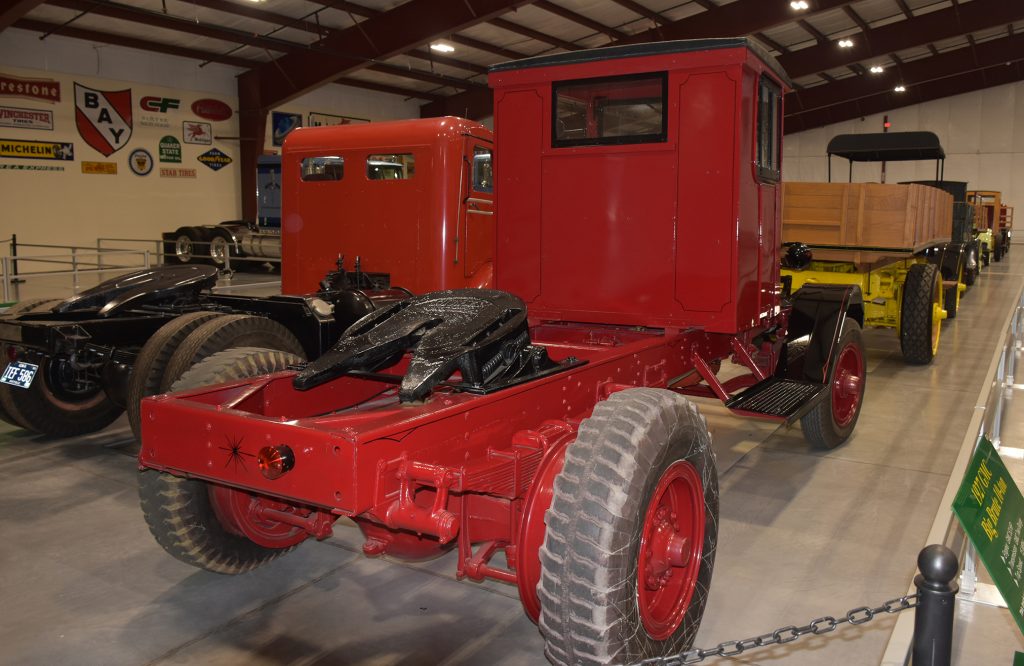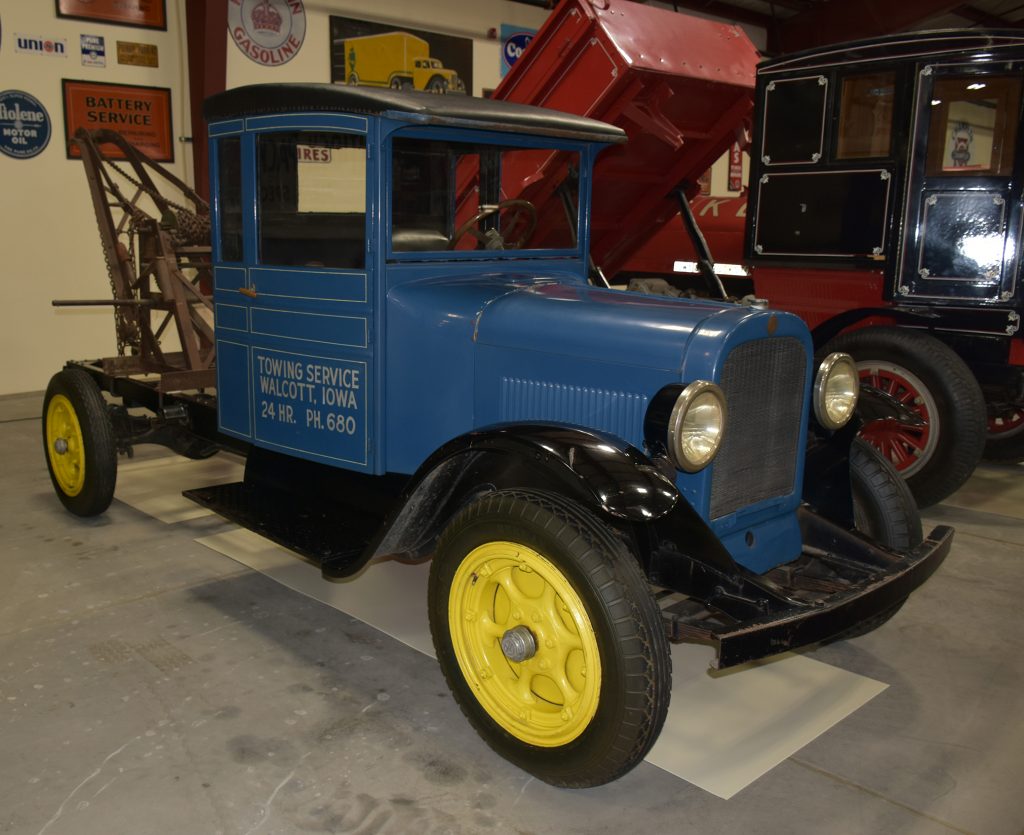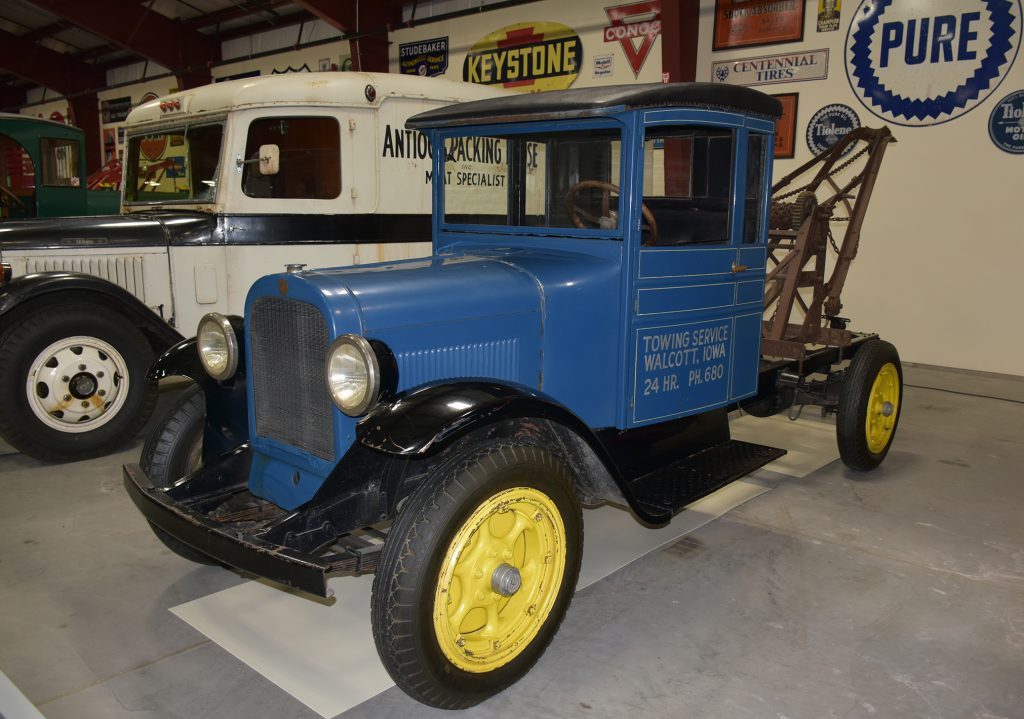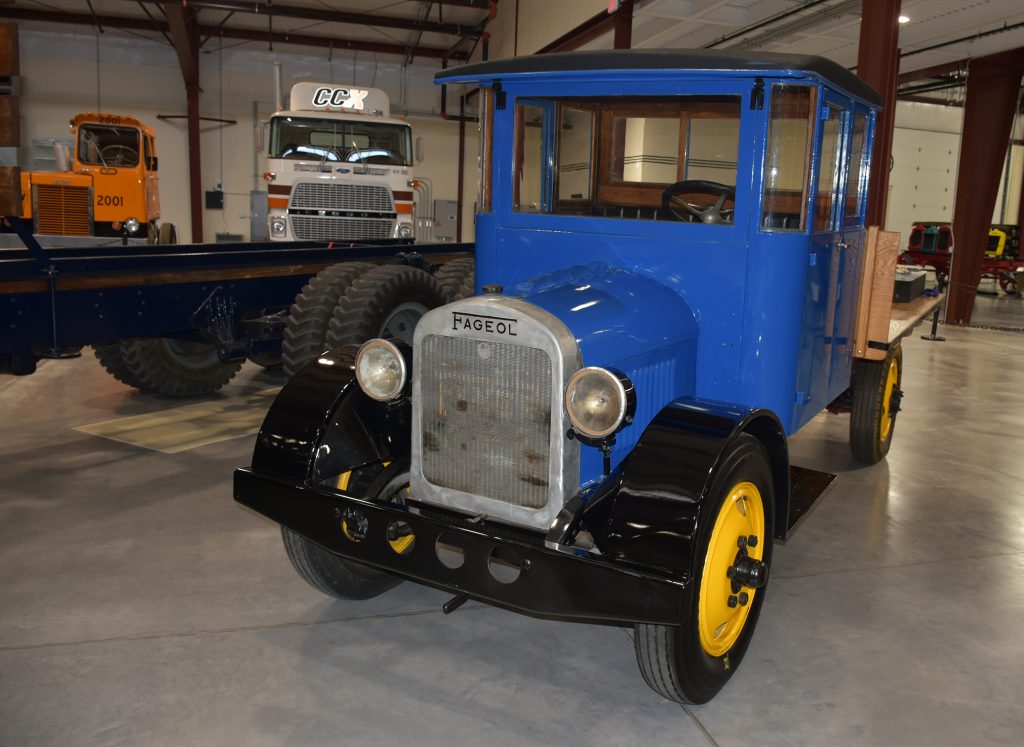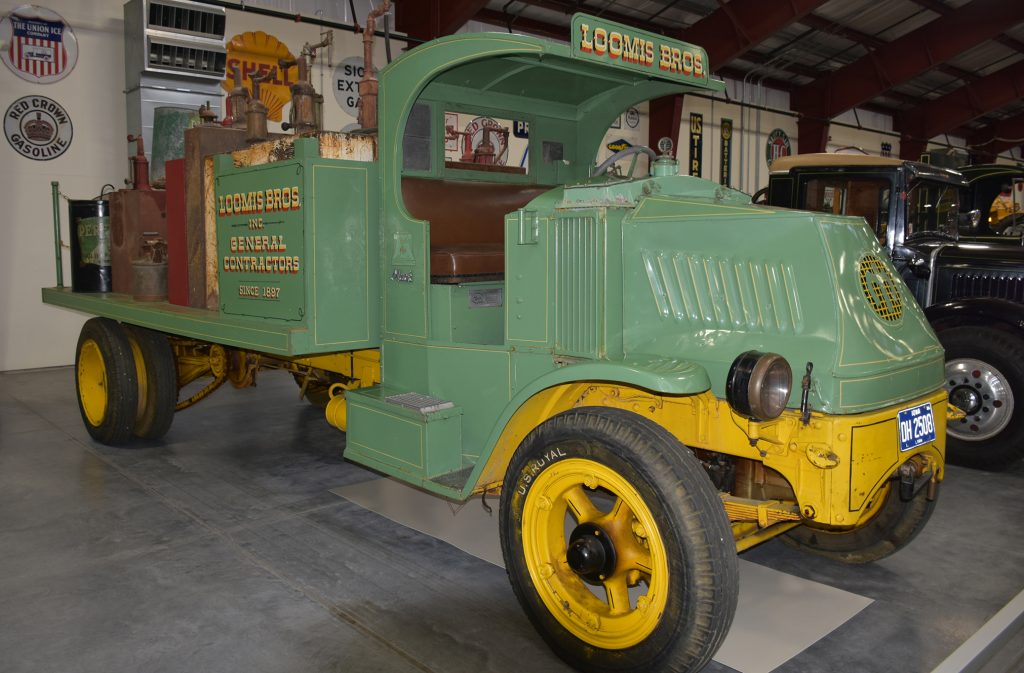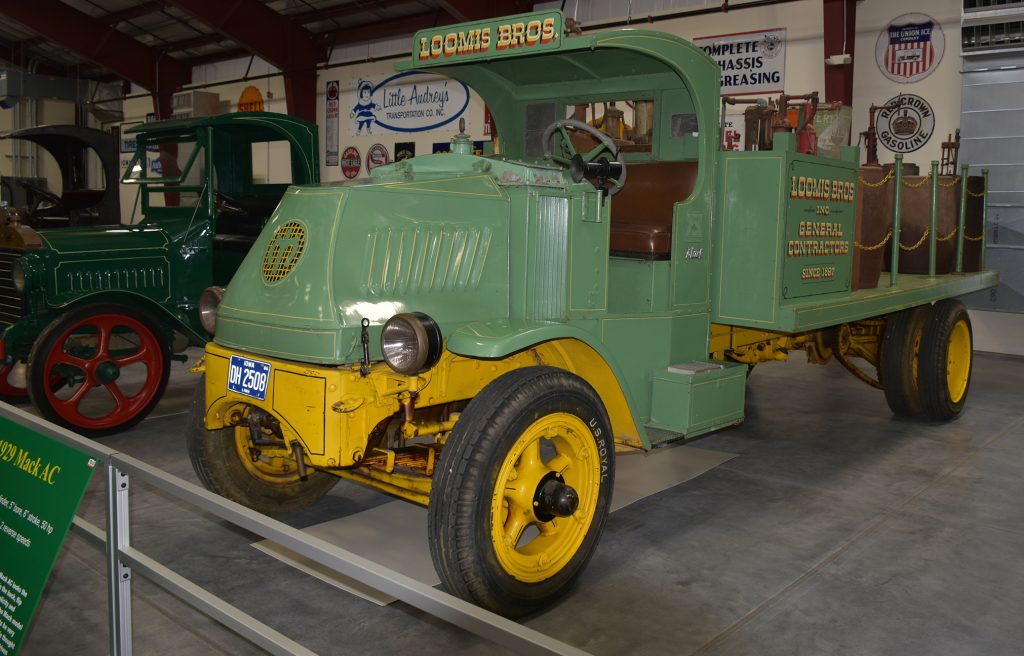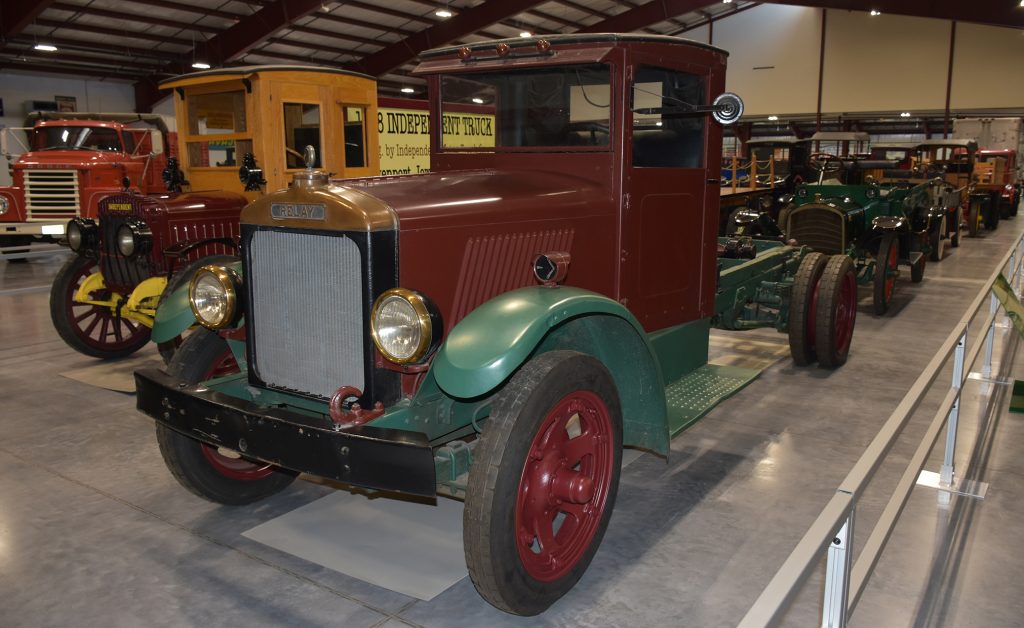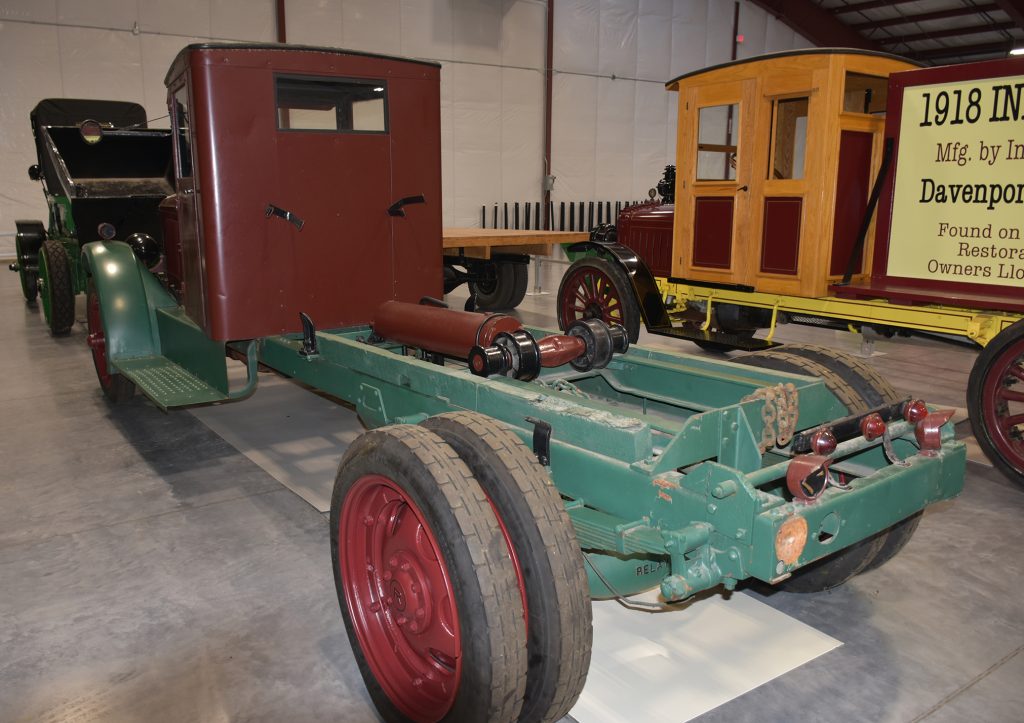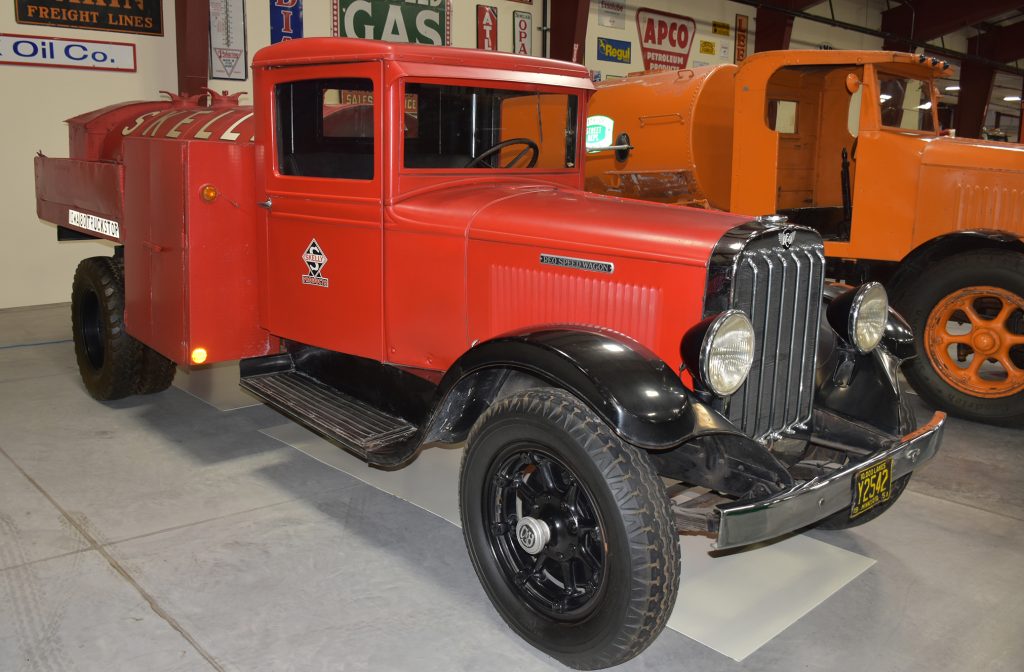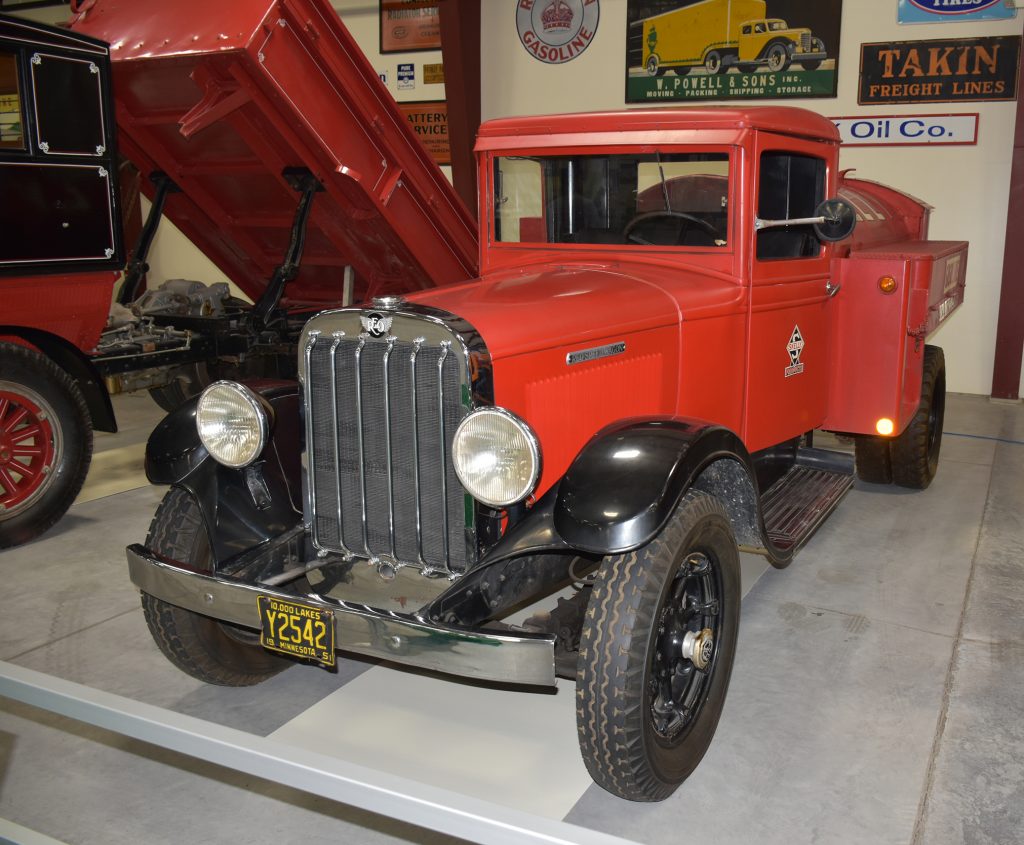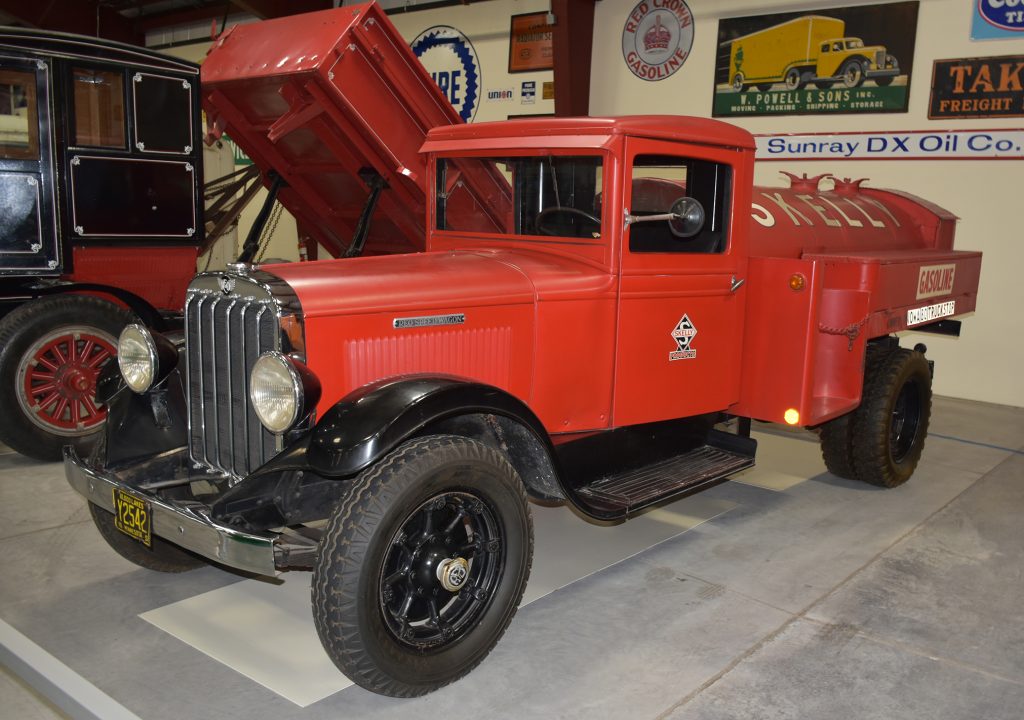| 1920 -1929 |
 1990-1919 1990-1919 |
 1930-1939 1930-1939 |
 1940-1949 1940-1949 |
 1950-1959 1950-1959 |
 1960-1980 1960-1980 |
 IOWA 80 IOWA 80 |
| 1920 GMC K-71 3½ Ton |
| ⇒Engine: GMC Four Cylinder, 4½ inch bore and 6-inch stroke ⇒Transmission: 4-speed with Hi-Lo range ⇒Horsepower: 51 When this truck was built in 1920 it was one of the most modern trucks being produced. Its unique engine design sported removable sleeves, a pressure oiling system, and a two-range transmission that provided 8 forward speeds. The valves were also located in the block, which allowed for easy engine repair and maintenance which was almost unheard of for the time period. The ignition was a magneto system and had an electric starter. This truck has solid rubber tires with hollow spoke cast wheels. The truck was available in two wheelbases; 163″ or 187″, putting the weight of the truck between 7,900 pounds and 8,100 pounds depending on customization. The truck was a 7,000-load capacity. Standard equipment included electric head lamps, one tail light, generator, storage battery, horn, tool kit and a jack. This truck was purchased by our founder, Bill moon, in 1991 at the renowned Earl Marhanka auction. At this auction over 350 pre-1930 trucks and tractors were sold; the largest collection at that time. |
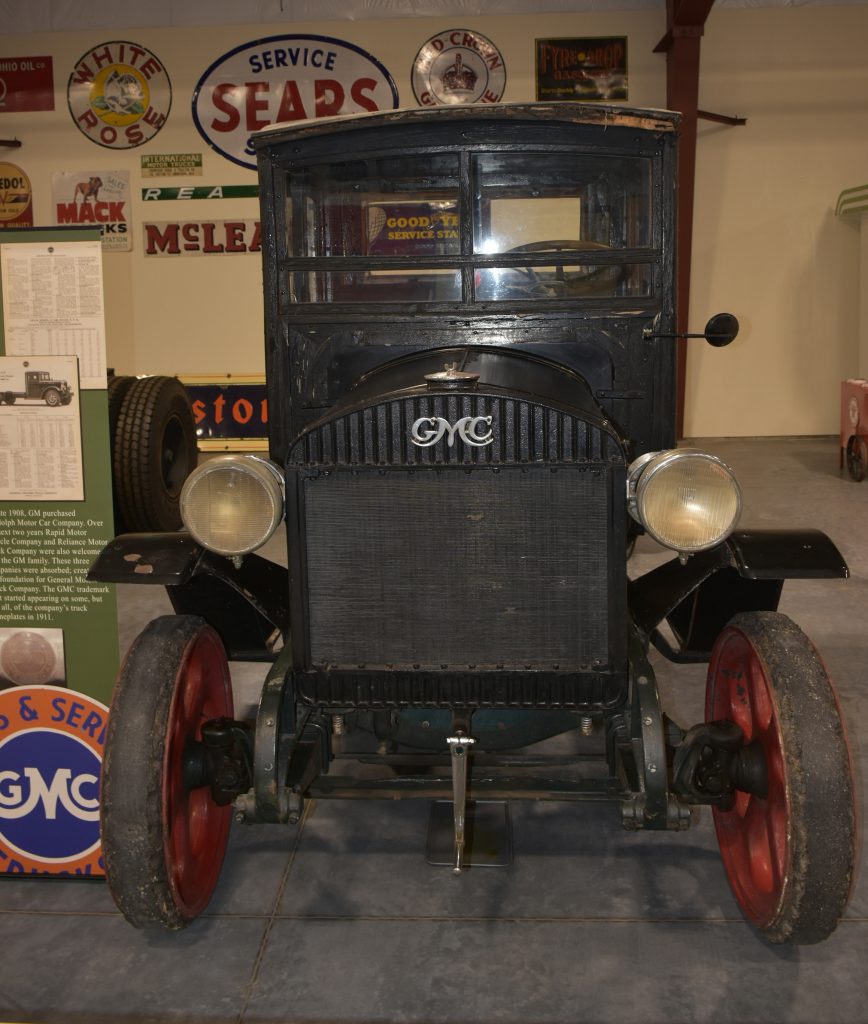 |
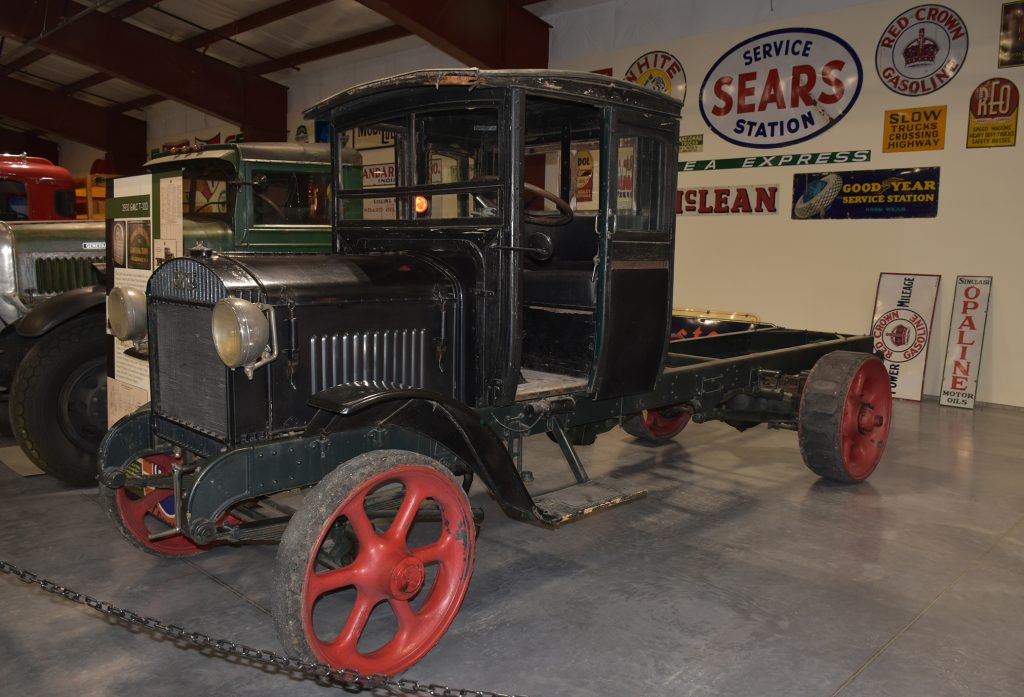 |
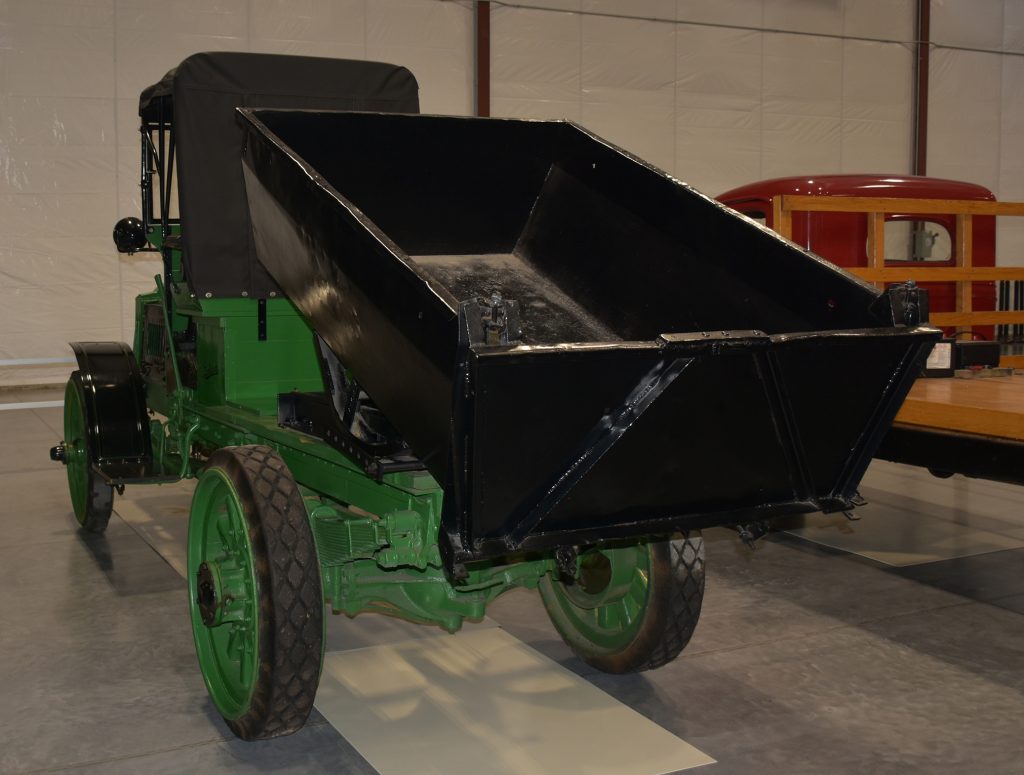 |
| 1921 INTERNATIONAL HARVESTER 101 |
| ⇒Engine: International Harvester 4 Cylinder ⇒Transmission: Brown-Lipe 4 Speed ⇒Top Speed: 14 MPH Based in Chicago, Illinois, the International Harvester company was a result of the merging of McCormick Harvesting Machine Company and Deering Harvester Company in 1902. Originally targeted to farmers, International Harvester started off only manufacturing tractors. In 1909, they started manufacturing trucks. International Harvester 101 models were manufactured for only three years, 1921-1923. Out of the limited amount manufactured, this truck is believed to be the only one left in existence. It is Serial Number 704 R. In 1921, this truck would have cost $4,500. Weighing 6,000 pounds, the truck’s maximum payload is 10,000 pounds. The frame measures eight inches in height and has seven cross members, making it the largest in International Harvester’s line of trucks. The previous owner of the truck was Curt Fisher of Mankato, MN. He purchased it at an estate auction in New Ross, IN. The truck had been restored 25 year prior, but Curt did some more restoration after purchasing. The Iowa 80 Trucking Museum purchased the truck in November of 2020 |
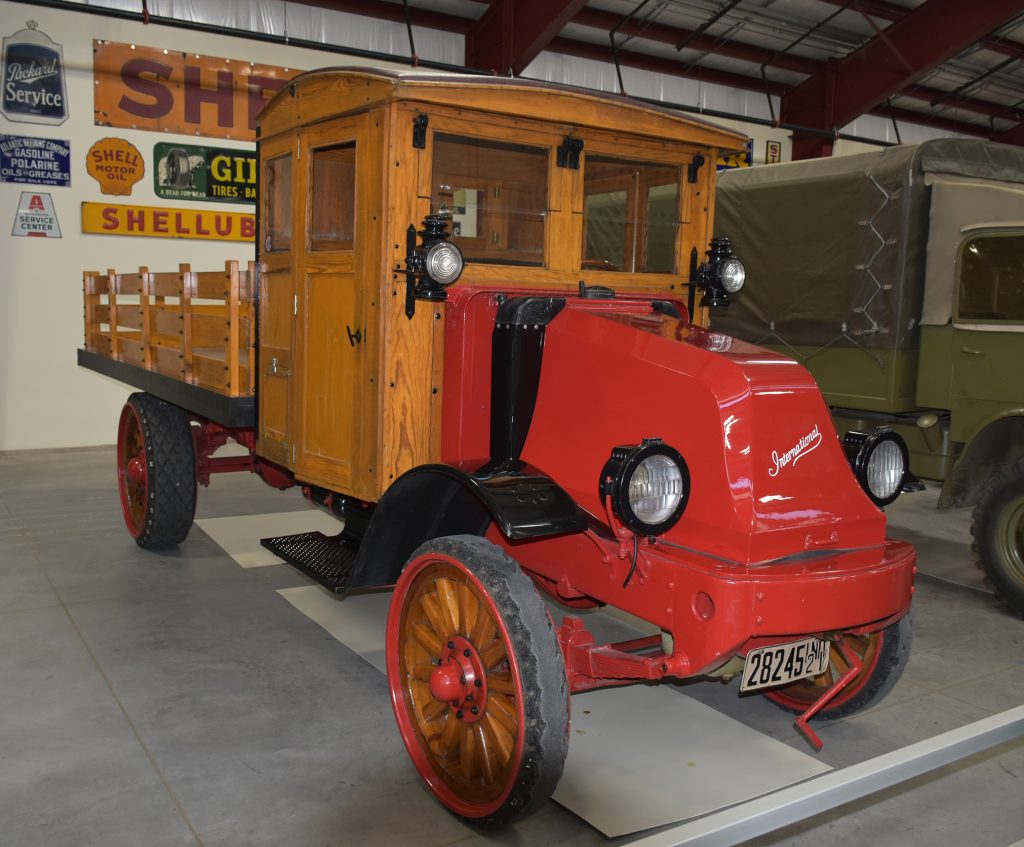 |
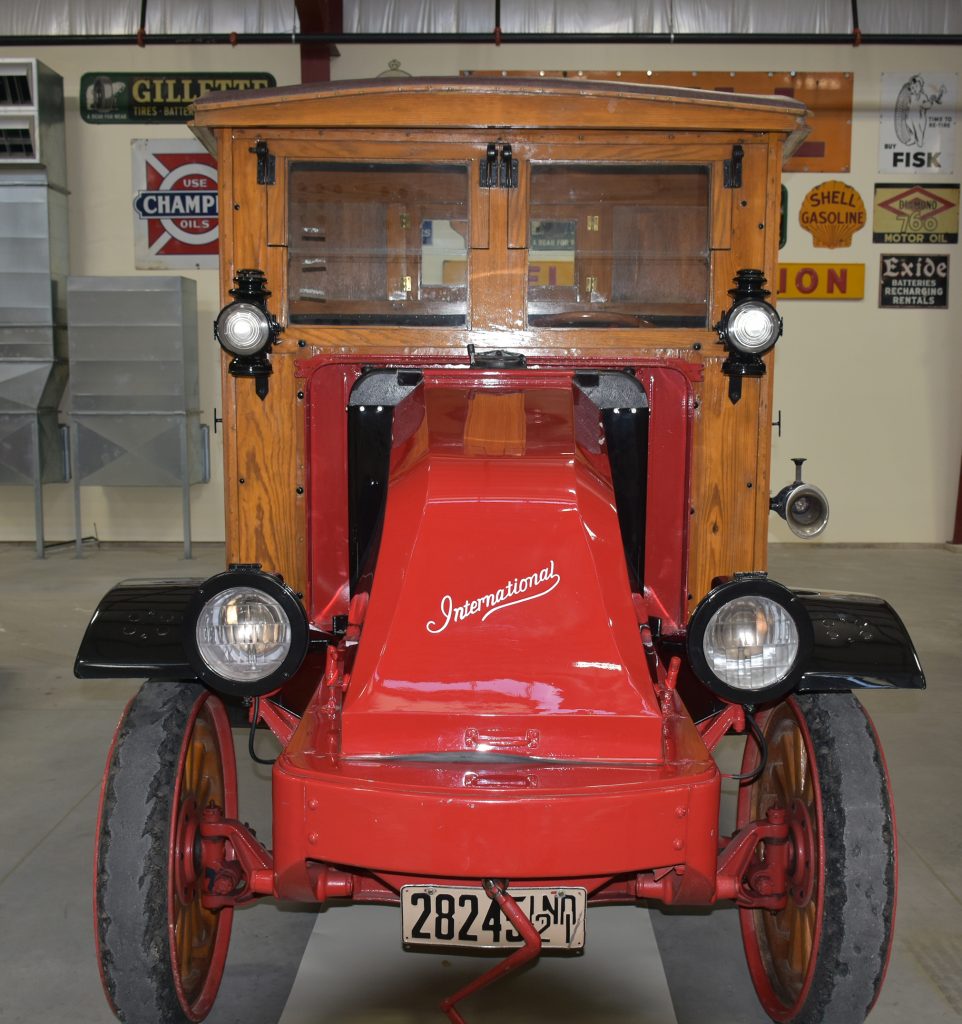 |
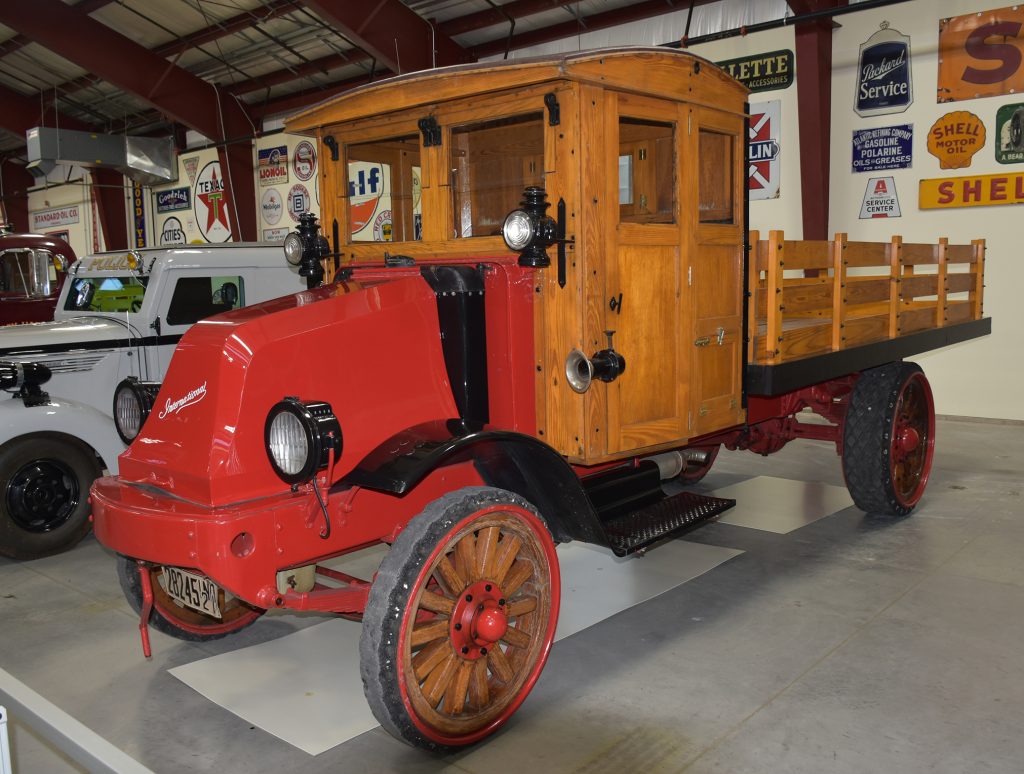 |
| 1922 WALTER SNOW PLOWN |
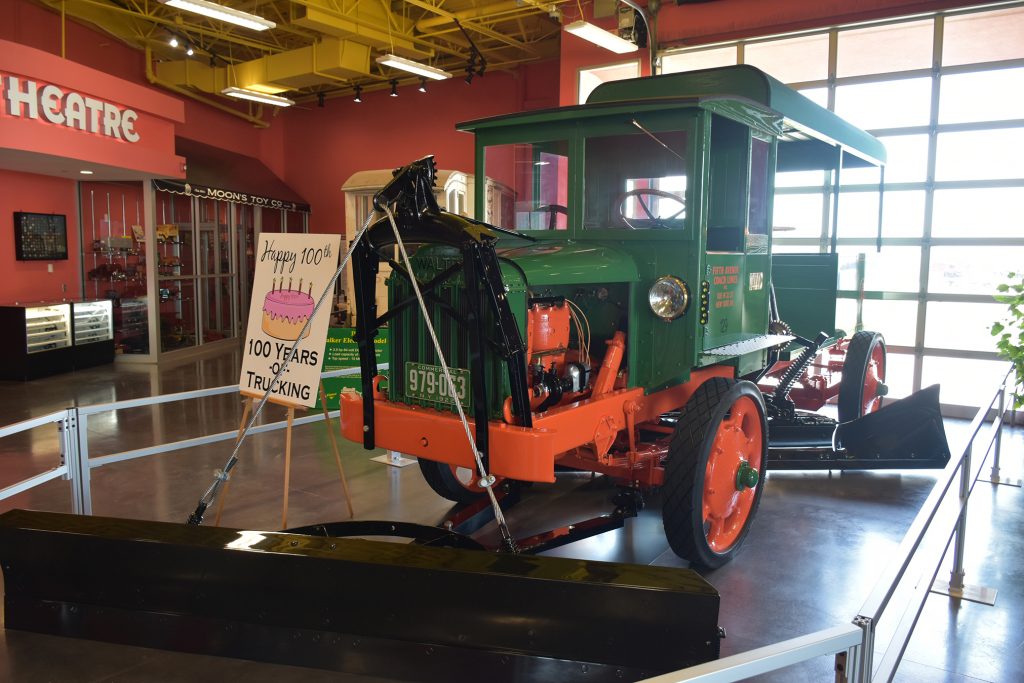 |
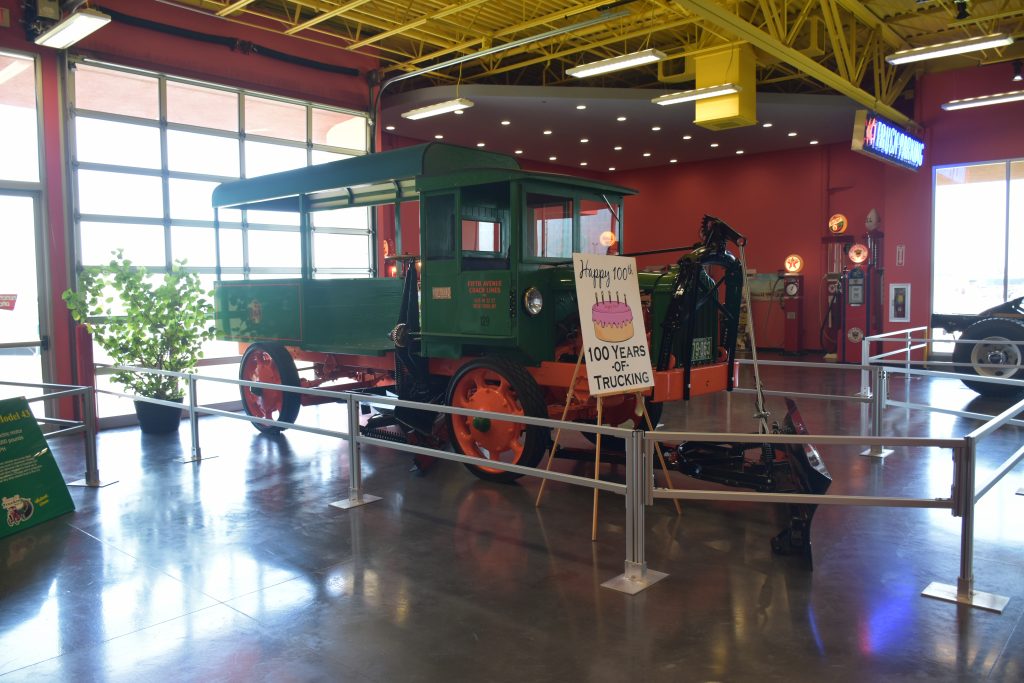 |
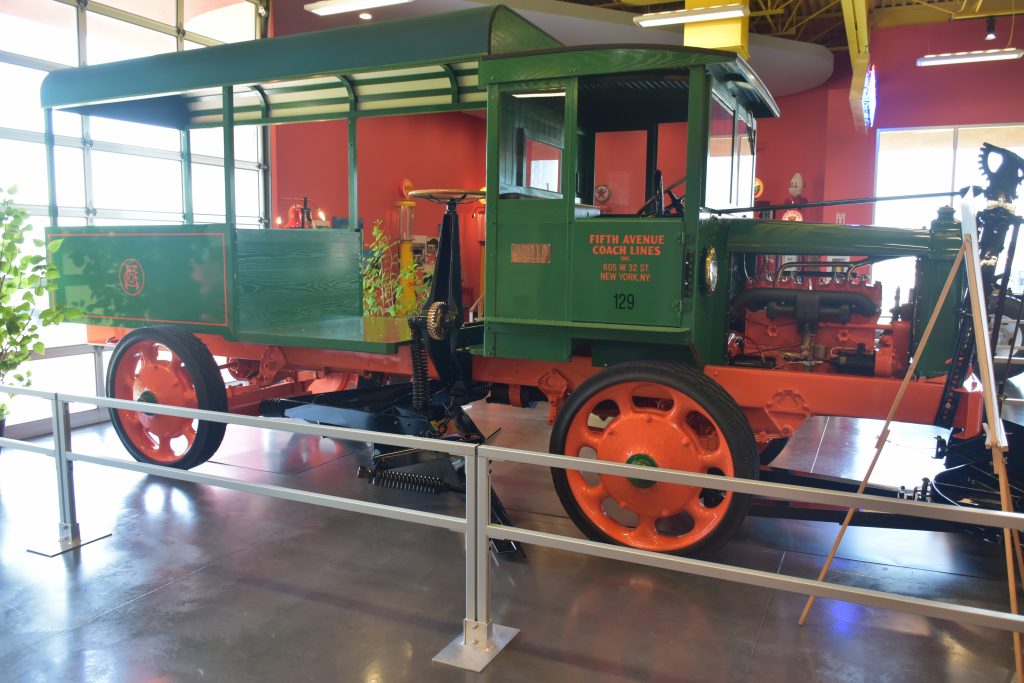 |
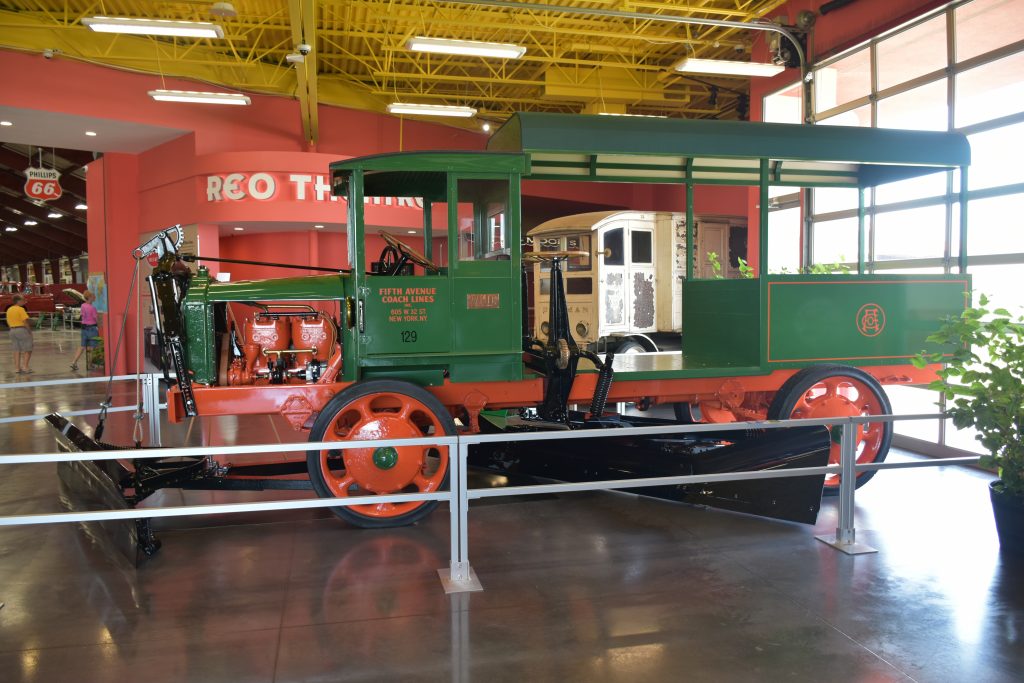 |
| 1924 BROCKWAY 2.5 Ton |
| ⇒Wisconsin TAV 25 hp engine ⇒Brown-Lipe 3-speed transmission ⇒Top speed – 20 MPH A brand new Brockway 2.5 Ton would have cost $3,000 in 1924, when this one was made. Once could get these in Cortland, New York from 1912 to 1977. In 1956, Brockway was purchased by Mack Trucks. |
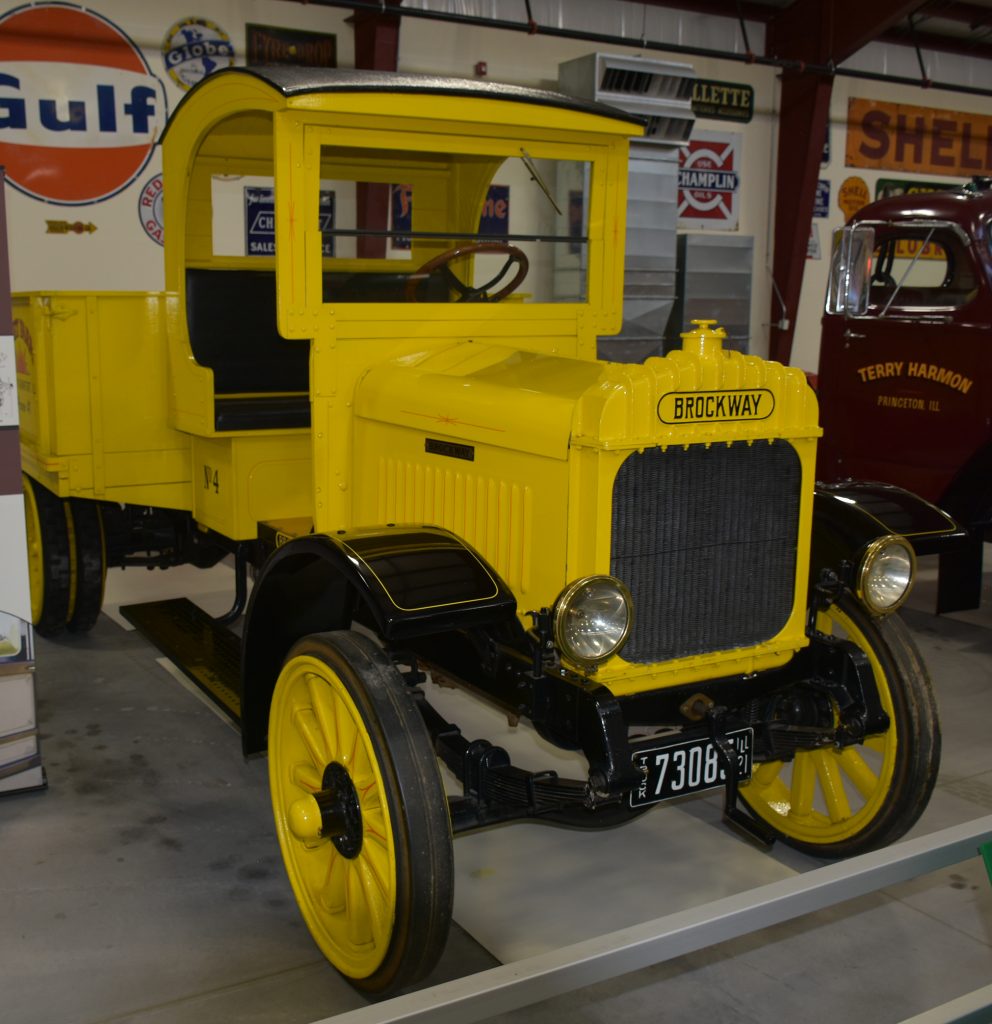 |
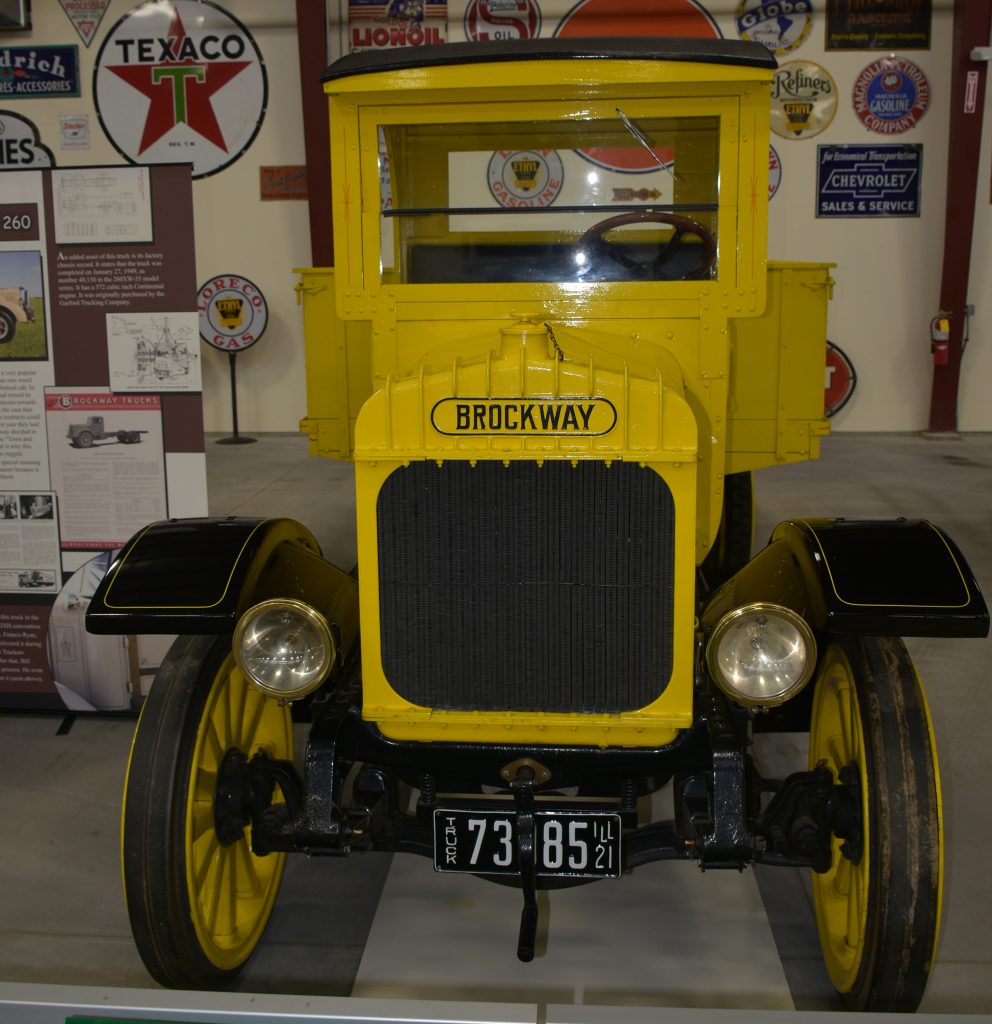 |
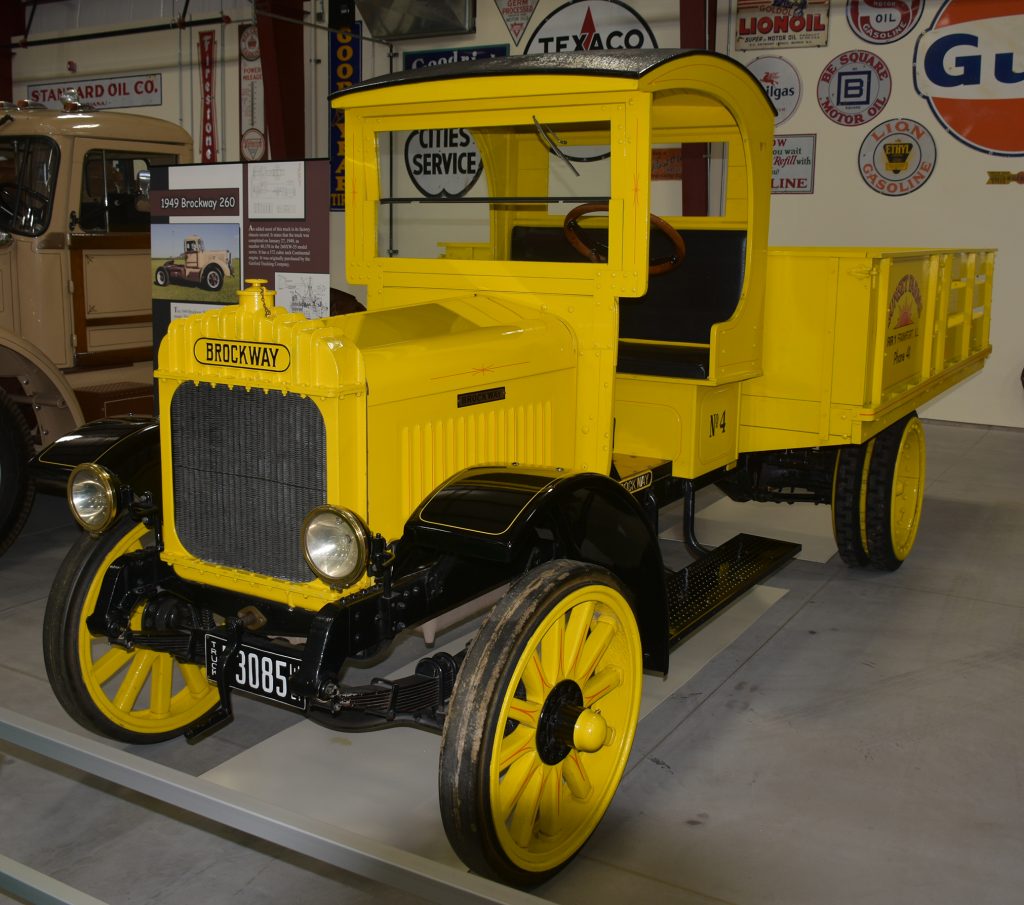 |
| 1925 DOUGLAS |
| ⇒Engine: Buda 4 Cylinder Gasoline ⇒Transmission: Fuller & Son GU-14-speed ⇒Top Speed: 15 MPH This Douglas is one of only 6 to still exist. Douglas Truck Manufacturing Company was founded in Omaha, Nebraska in 1917. The demand for 6-wheelers grew as a result of regional truck weight restrictions, and Douglas had them available before any of the other truck manufacturers. Douglas was only in business until 1935, and produced a relatively low number of trucks, making them extremely rare. The rig on the back is a Cyclone Cable Tool Drilling Machine. A cable tool drill, also known as a percussion drill, is used to bore holes into materials such as rock, soil and concrete. The cable tool drill as we know it today was invented in 1825. It was widely utilized for drilling water wells, and later became useful in oil drilling, operating on the first modern oil wells in North America. This specific truck and rig made its home in Cedar Bluffs, Nebraska, drilling mostly water wells until 1950. The Iowa 80 Trucking Museum acquired this truck in September of 2010. |
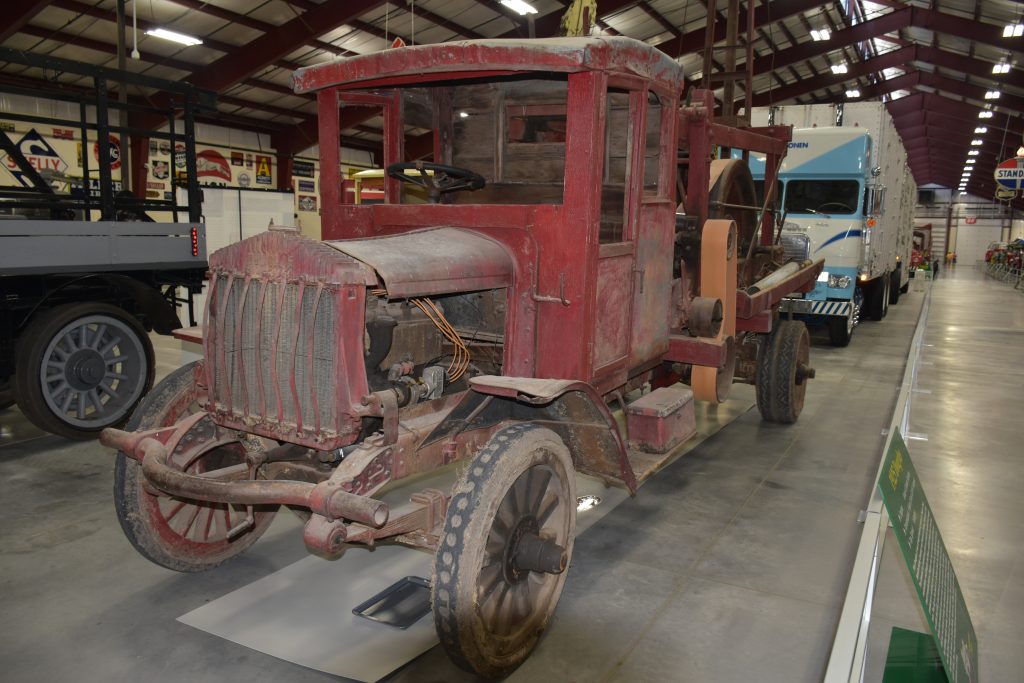 |
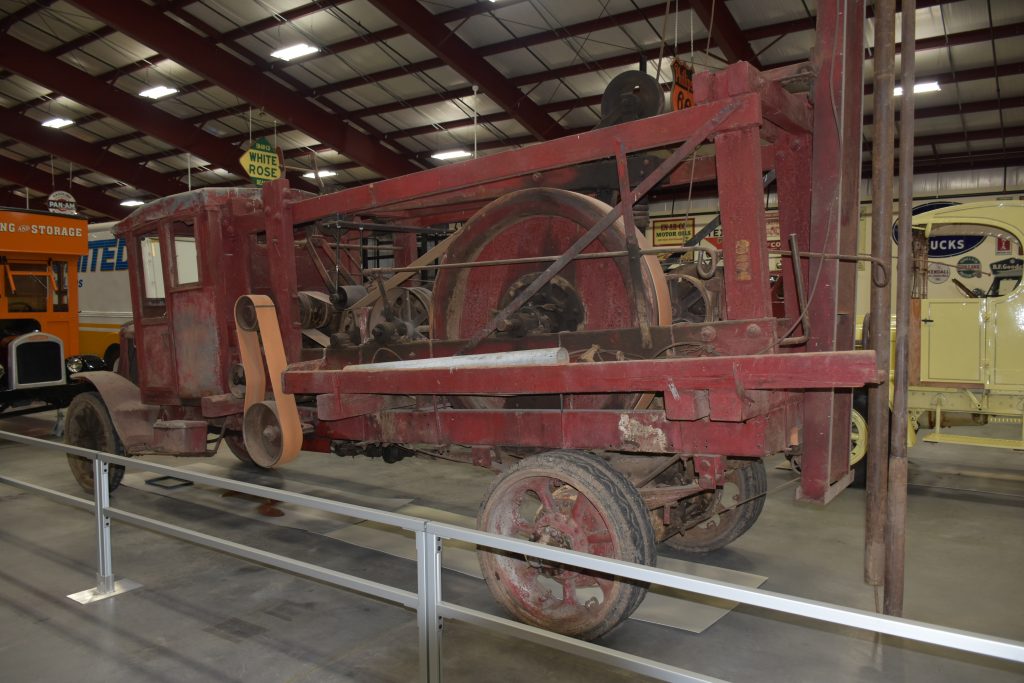 |
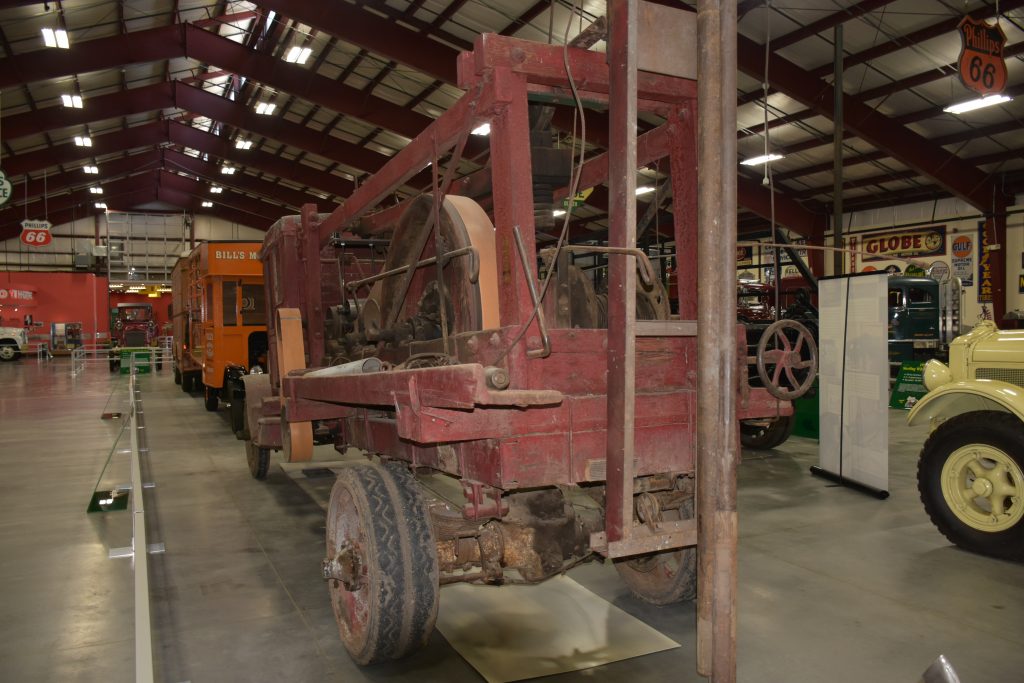 |
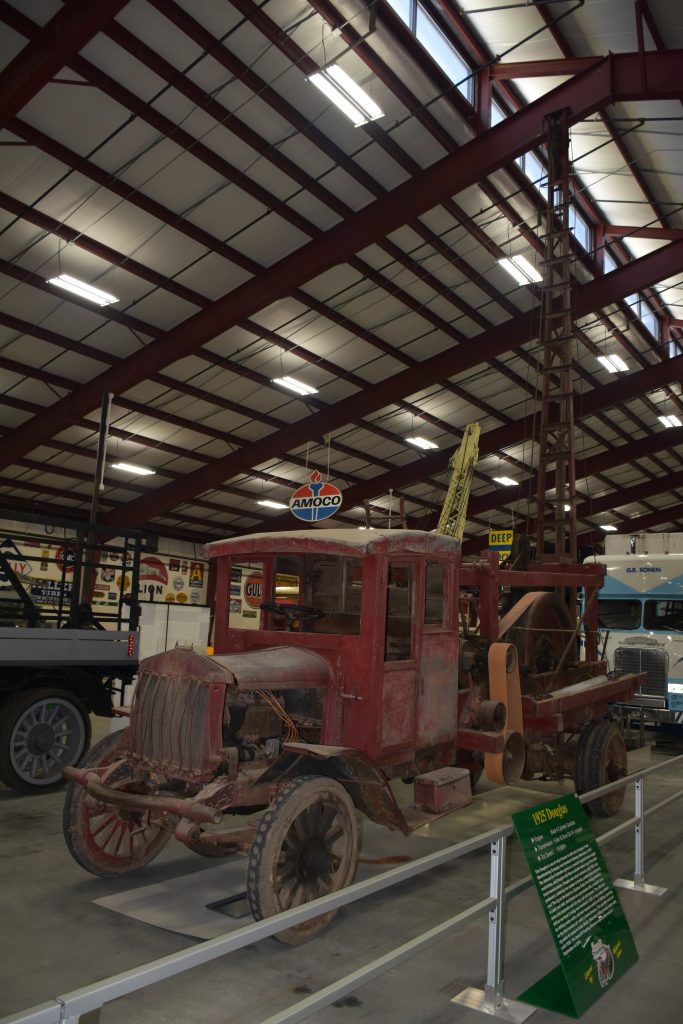 |
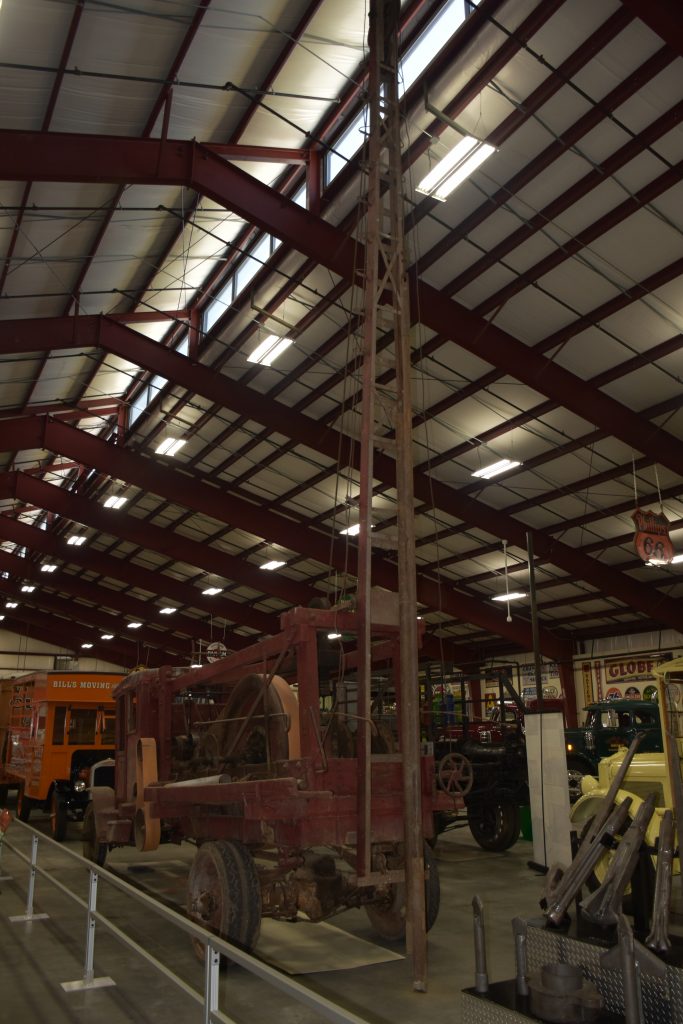 |
| 1927 FISHER JR EXPRESS |
| ⇒Engine: Continental 31 L 6-cylinder ⇒44.5 HP @2,800 RPM ⇒Transmission: 3 forward speed, 1 reverse ⇒Top Speed: 25 MPH Fisher Motor Trucks were manufactured from 1912 to 1933 by the Standard motor Truck Company in Detroit, Michigan. Albert Fisher was President. They built 1-ton to 3½ ton models. Their slogan was Powerful, Speedy Motor Trucks of Latest Design with inbuilt Quality. According to a permit badge that was discovered on the truck, this truck was still in use in 1948 and owned by John T. Schaub & Son, Inc., Newark, New Jersey. The 6-cylinder L-head engine has a 2 & 7/8 bore and a 4 & ¾ stroke for 185.04 cubic inches. The gross weight capacity of the truck is 5,275 pounds. This allows for a 750 pound body and a 2,525 pund chassis. Bill moon purchased this truck from an auction at Harrah’s Casino in 1982. The truck was restored to its current condition in 2013. The wood body on the truck is completely new and built to original specifications. |
 |
 1990-1919 1990-1919 |
 1930-1939 1930-1939 |
 1940-1949 1940-1949 |
 1950-1959 1950-1959 |
 1960-1980 1960-1980 |
 IOWA 80 IOWA 80 |


